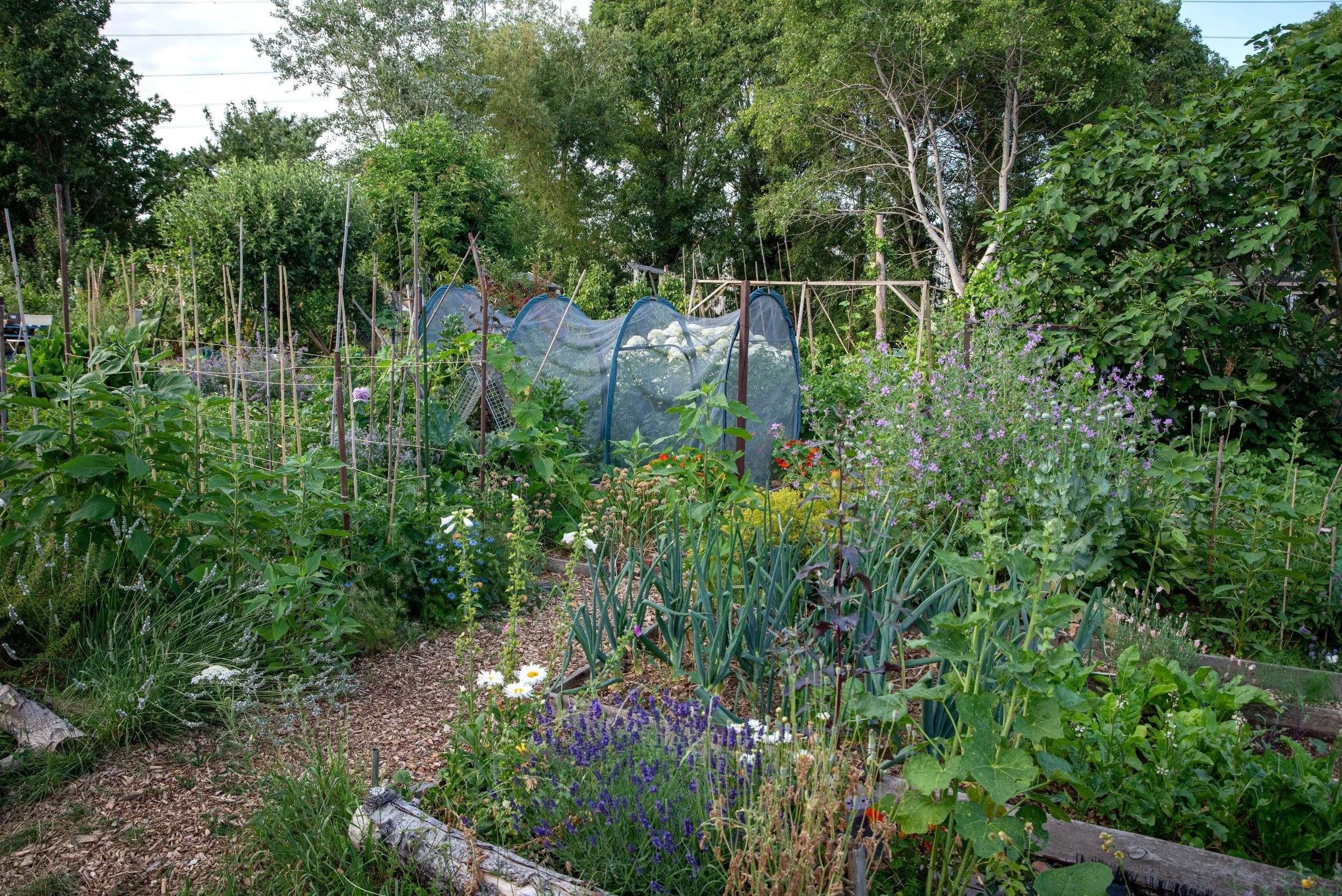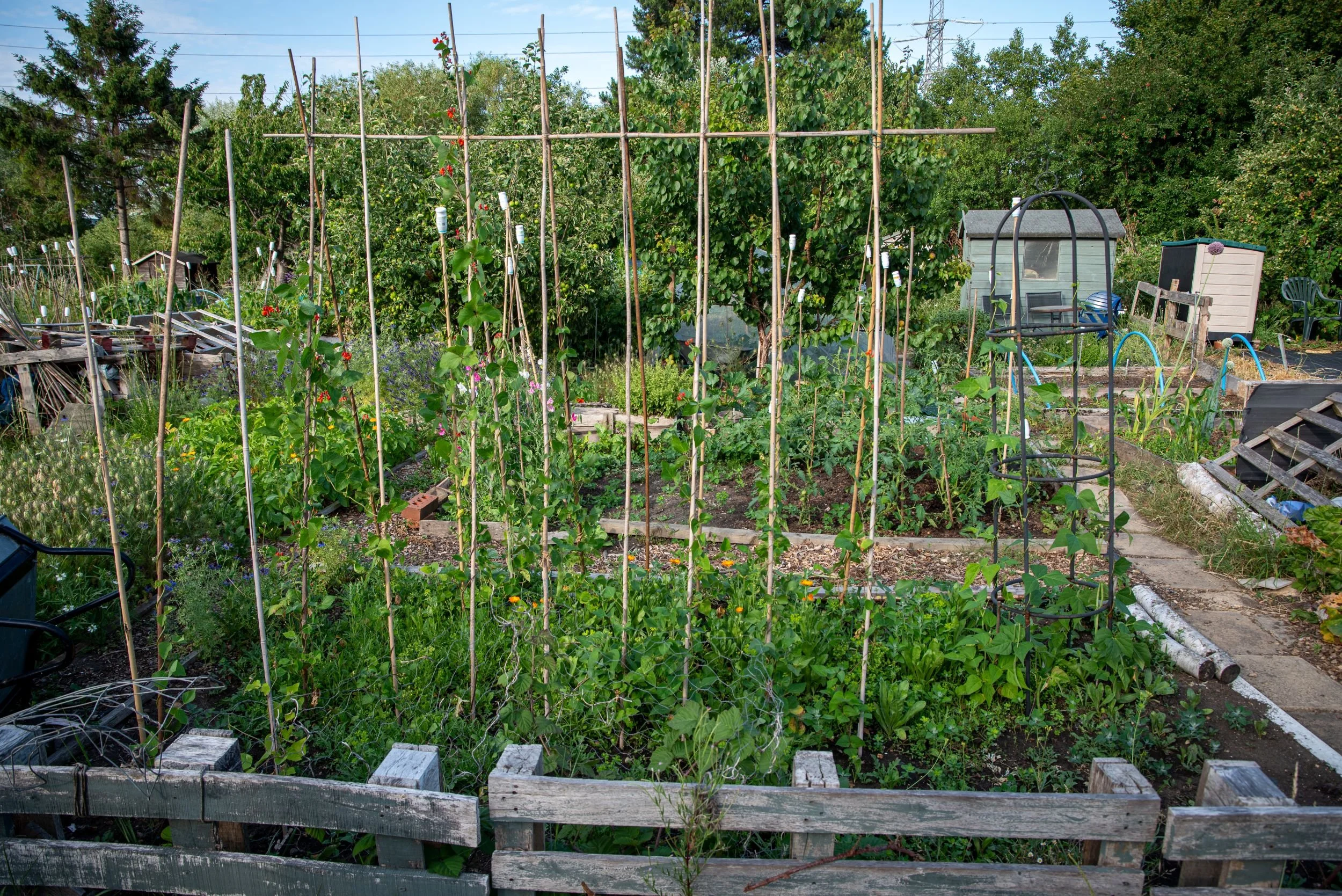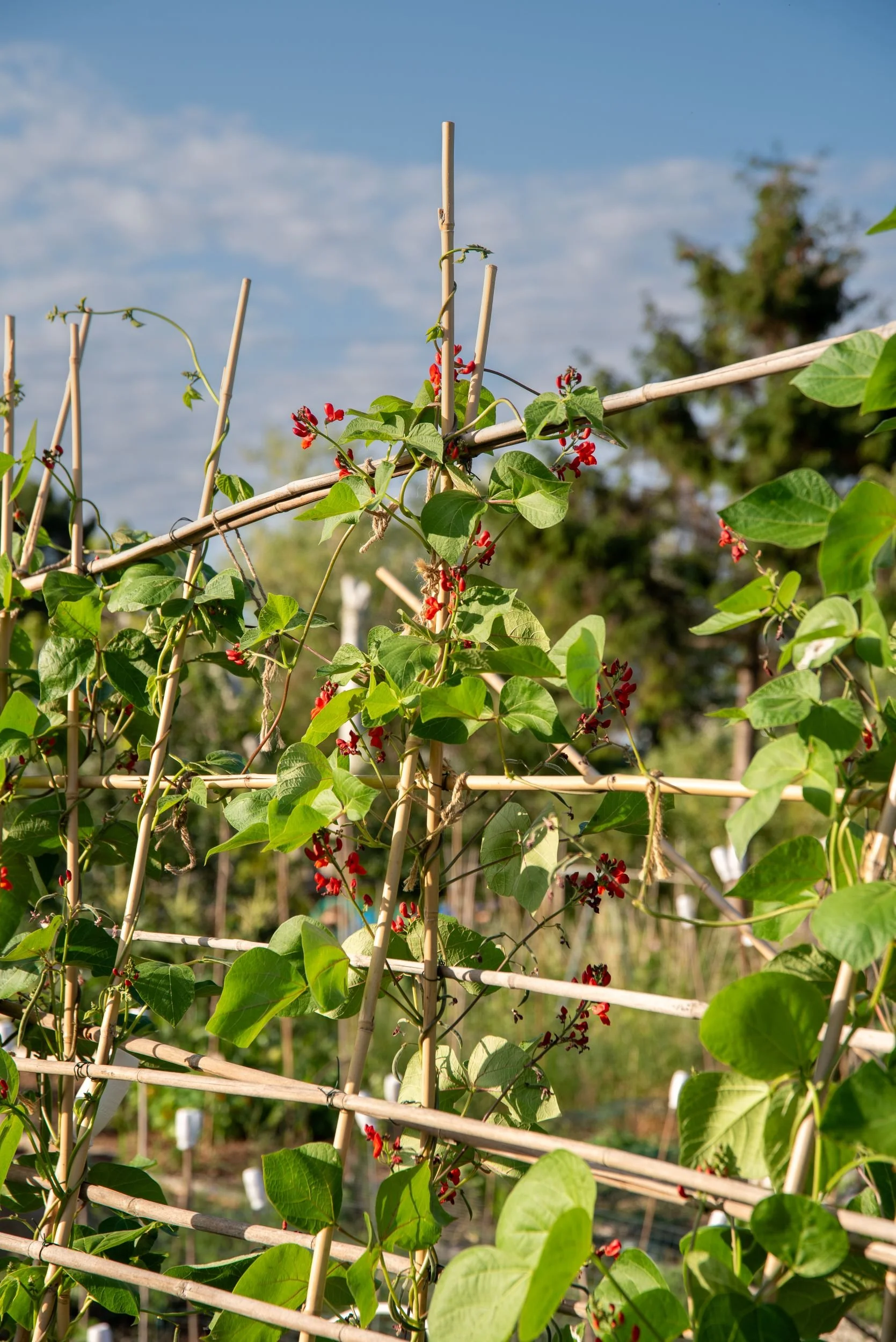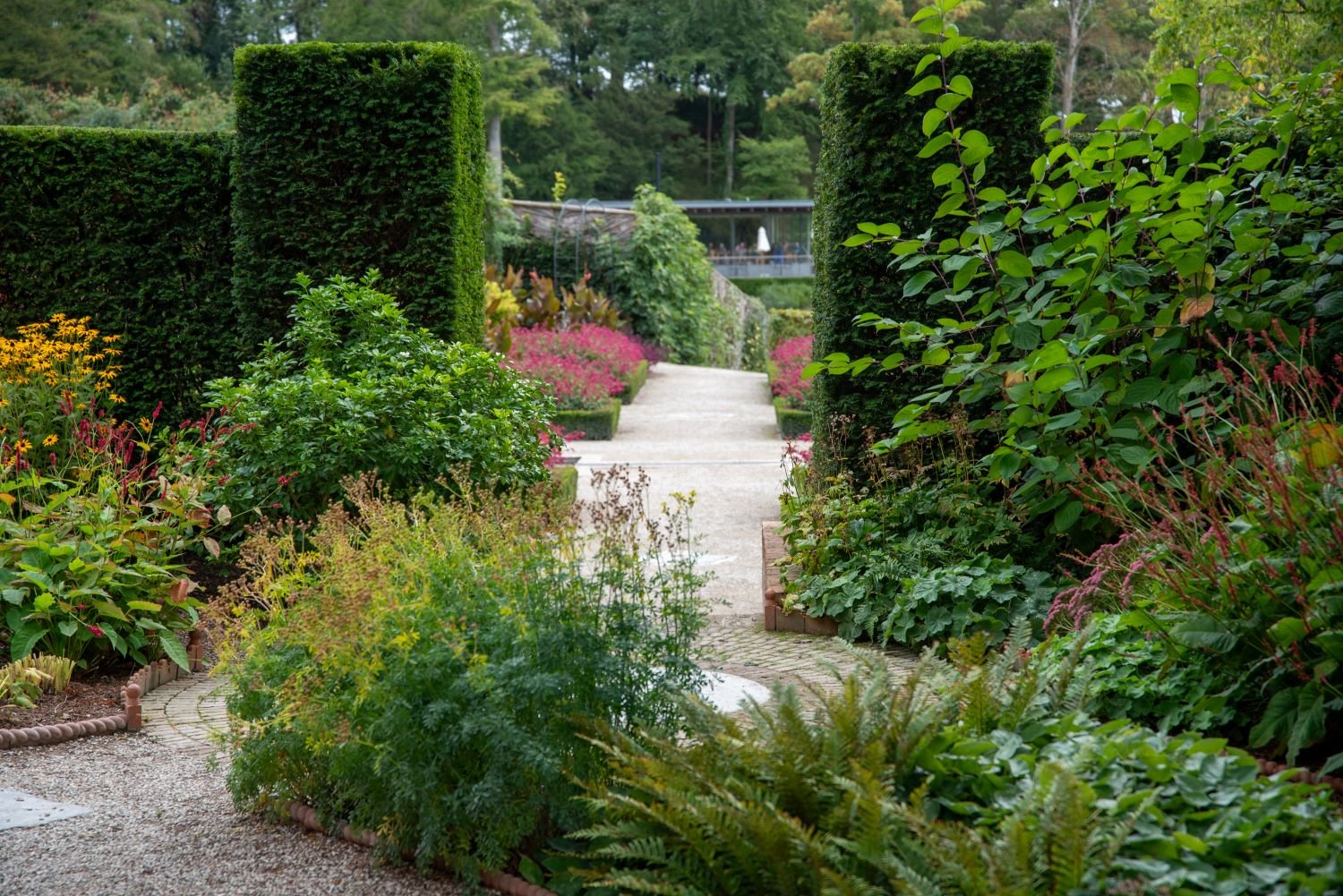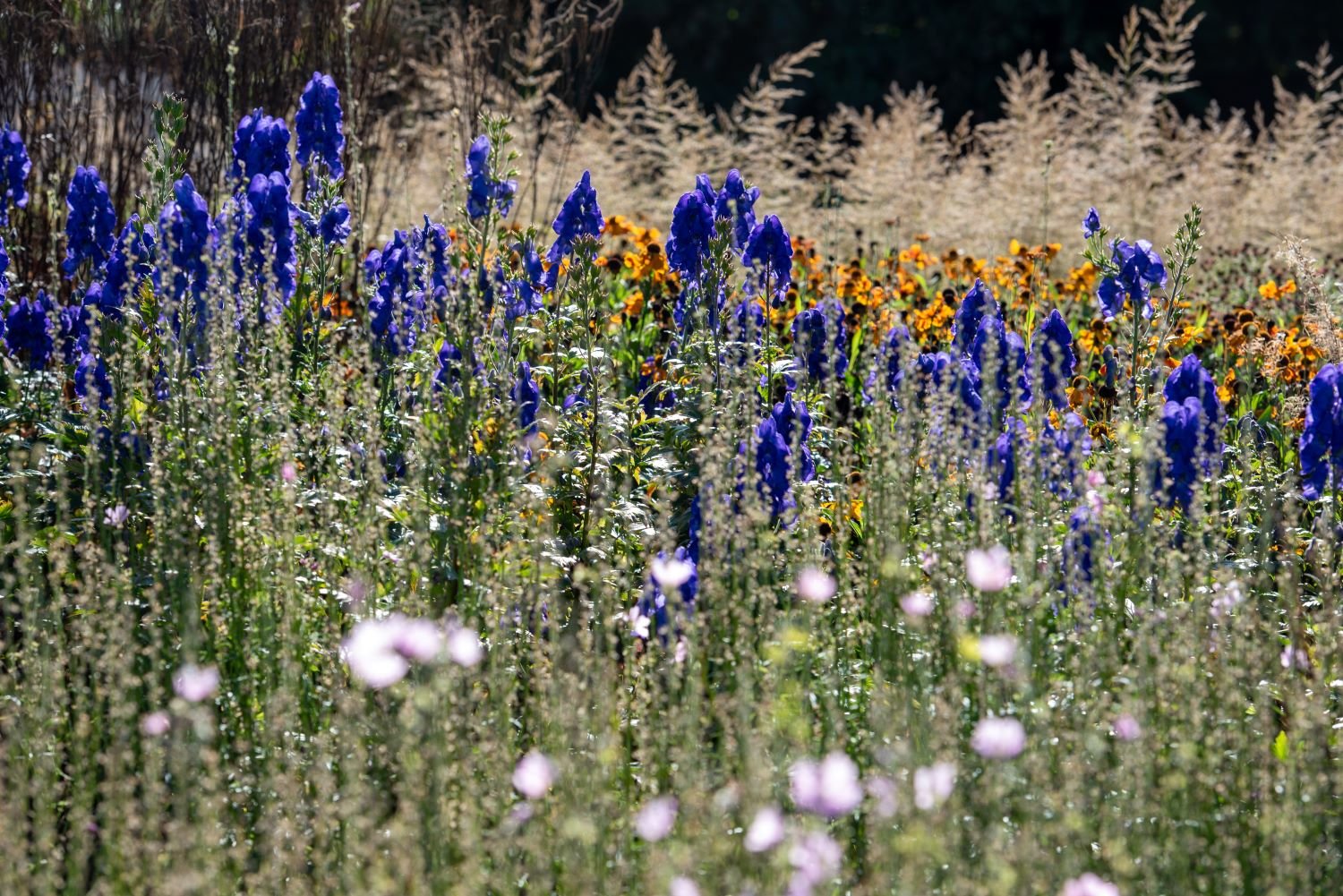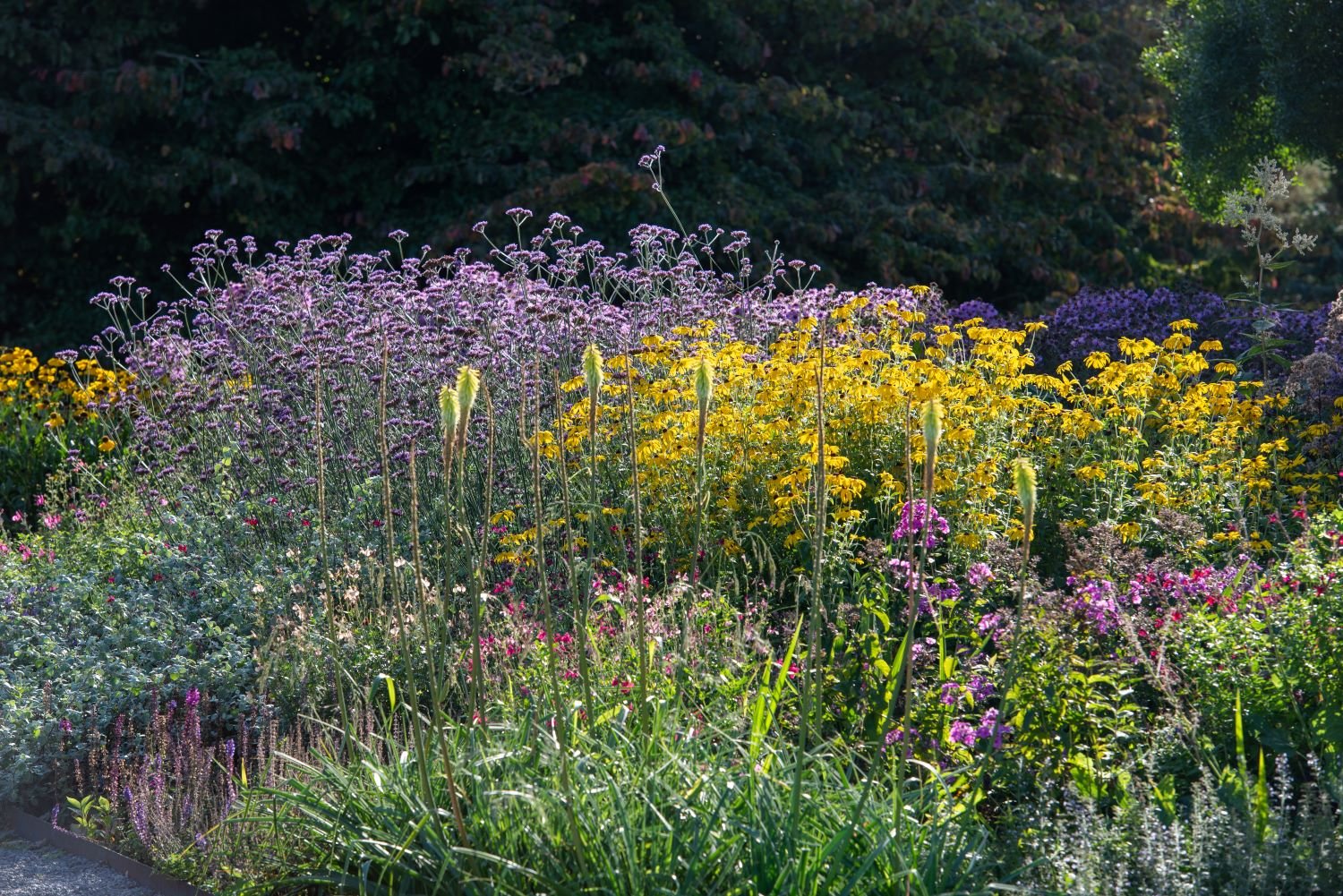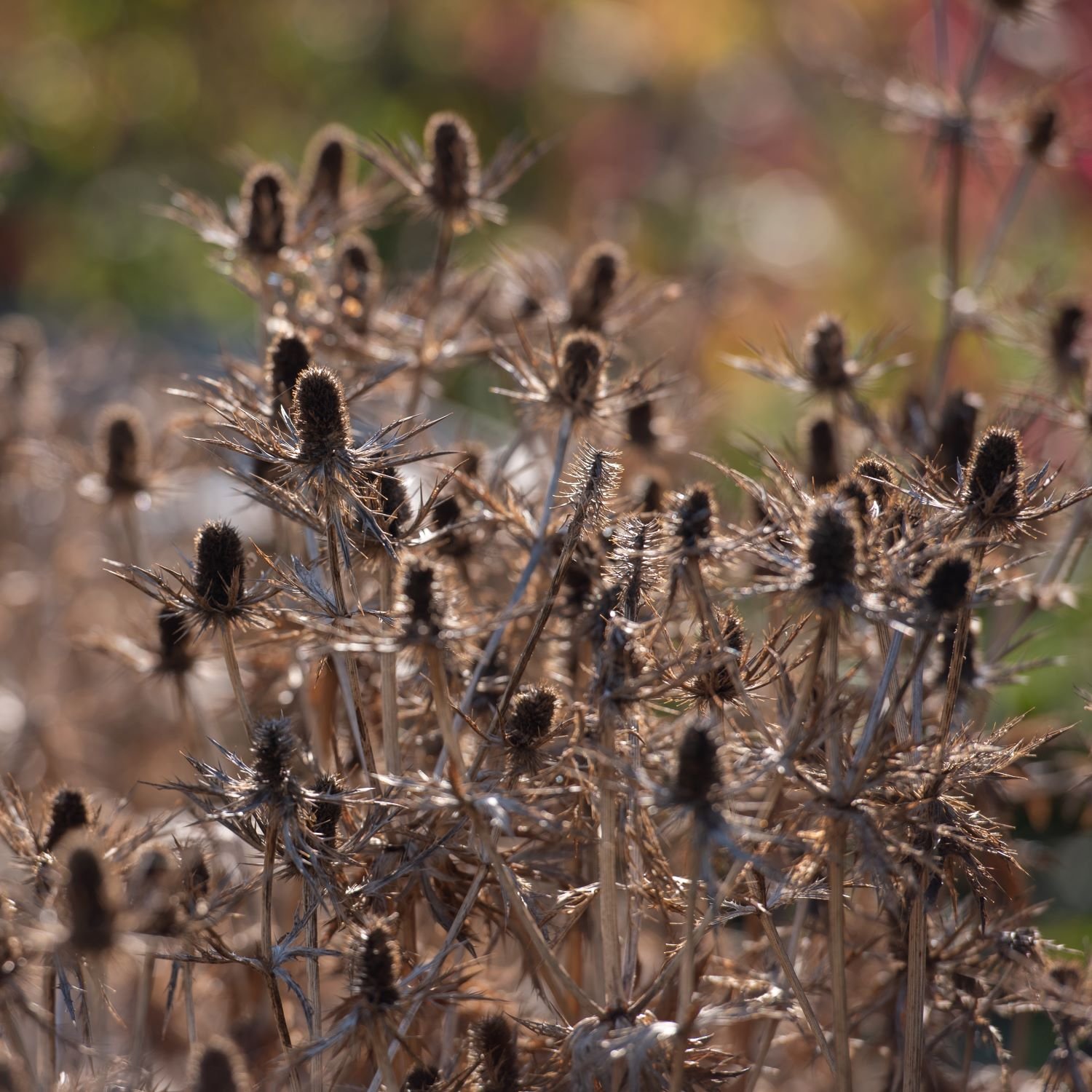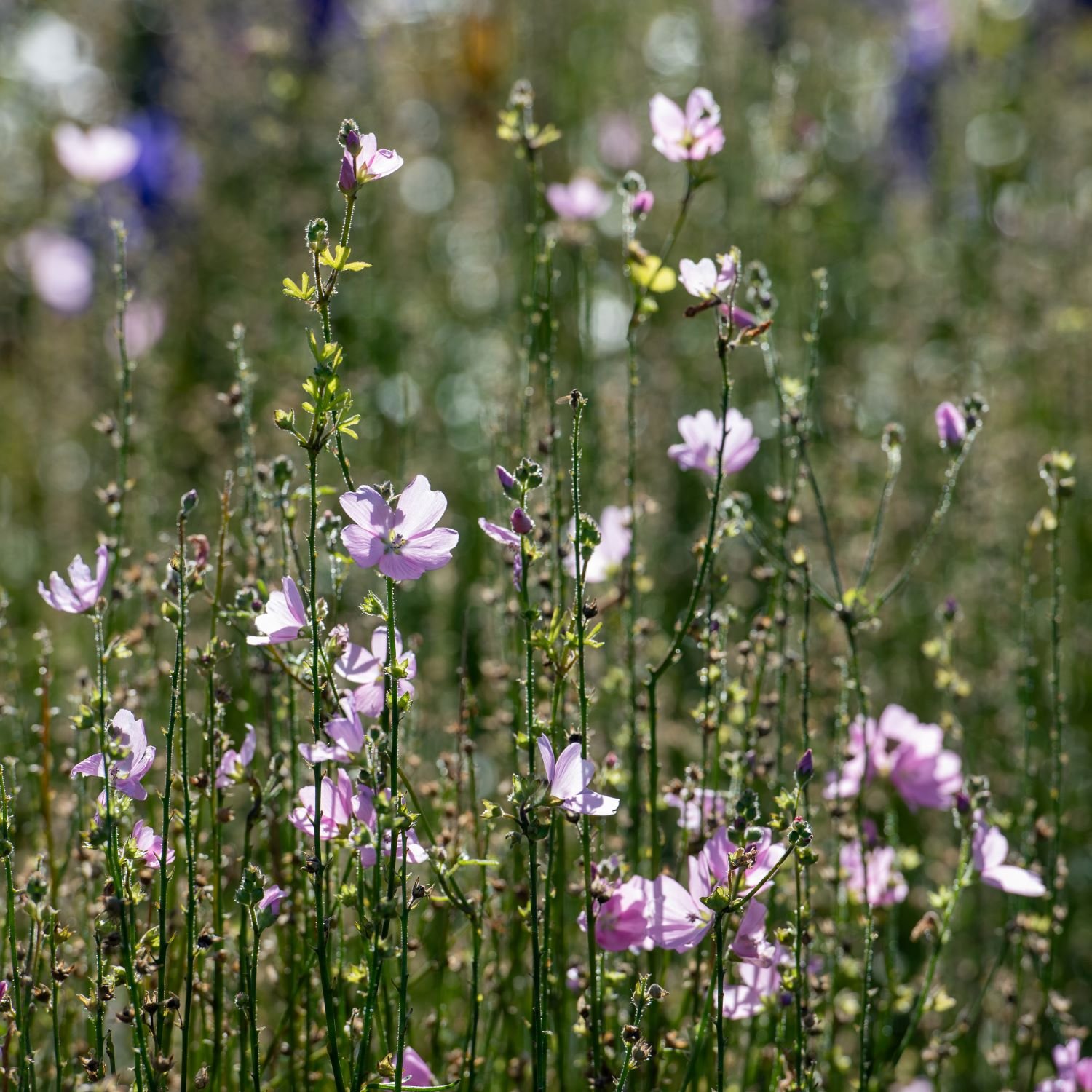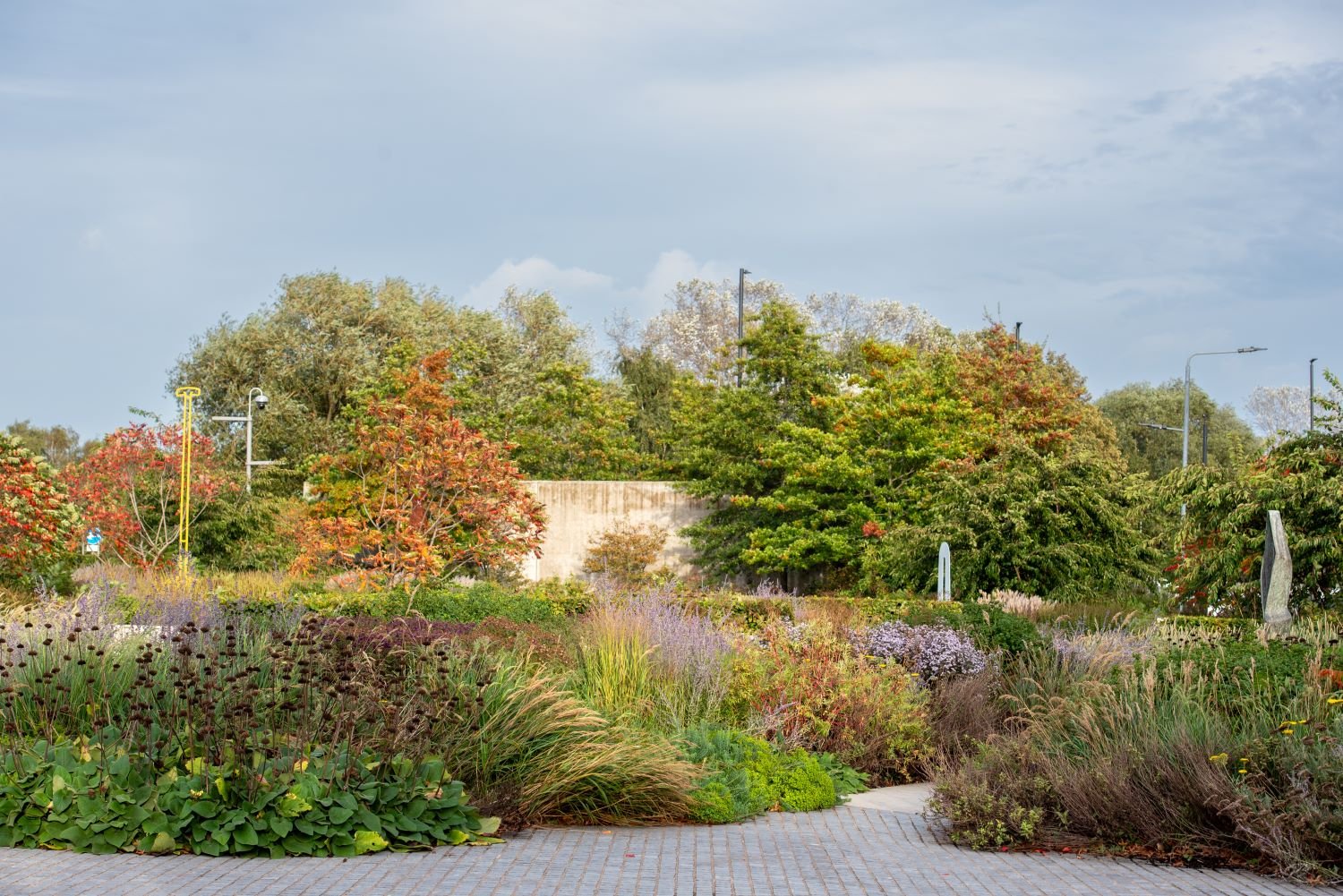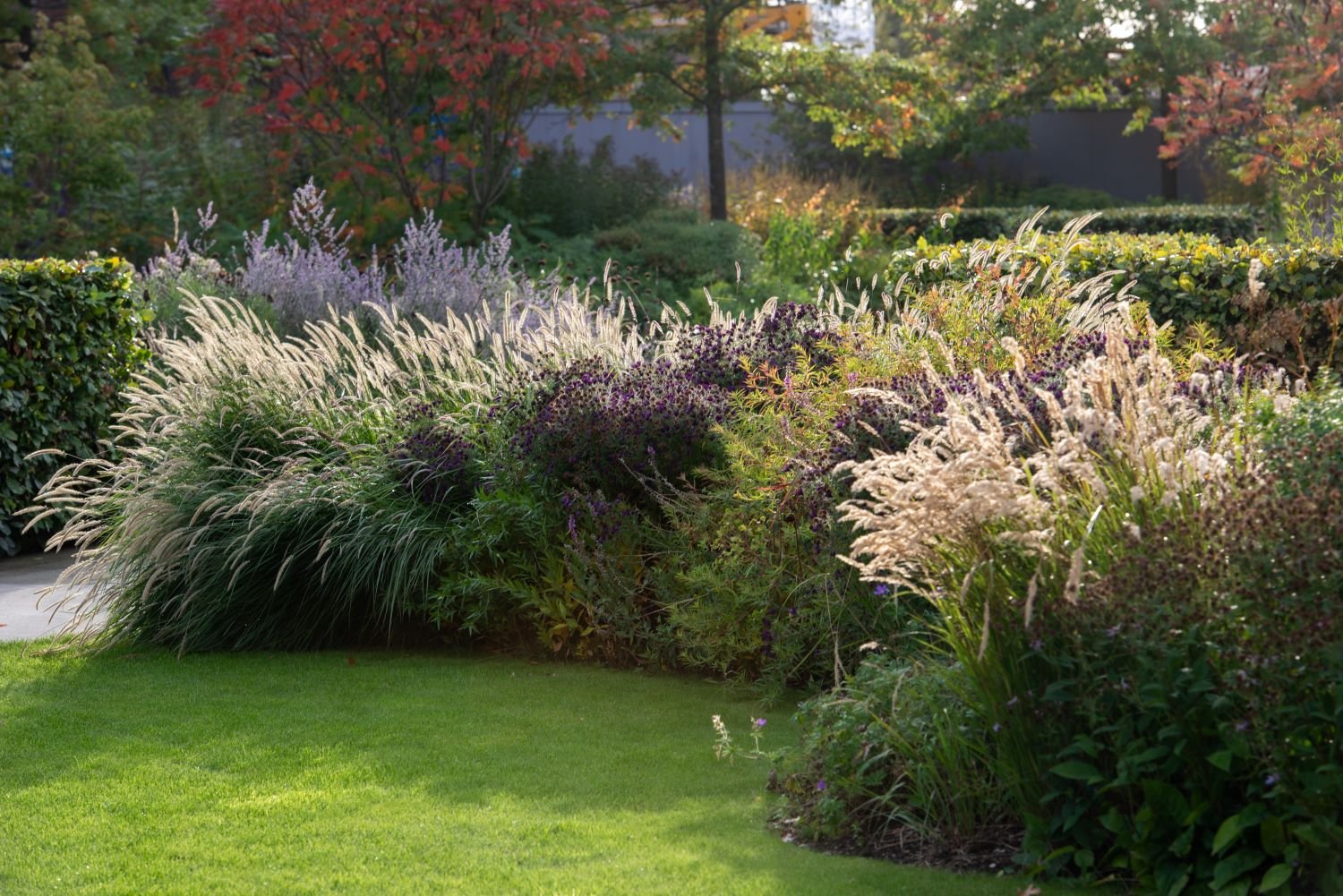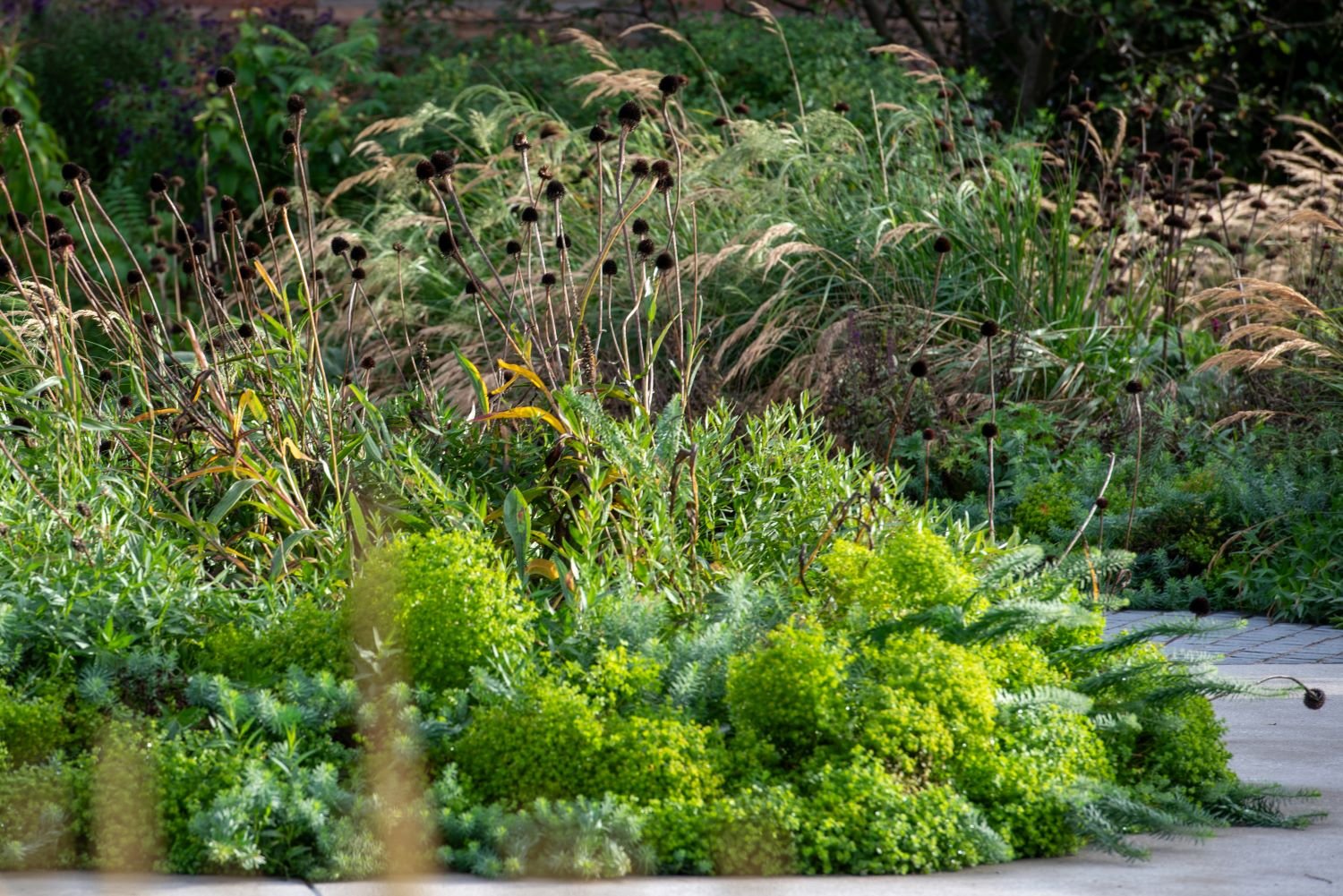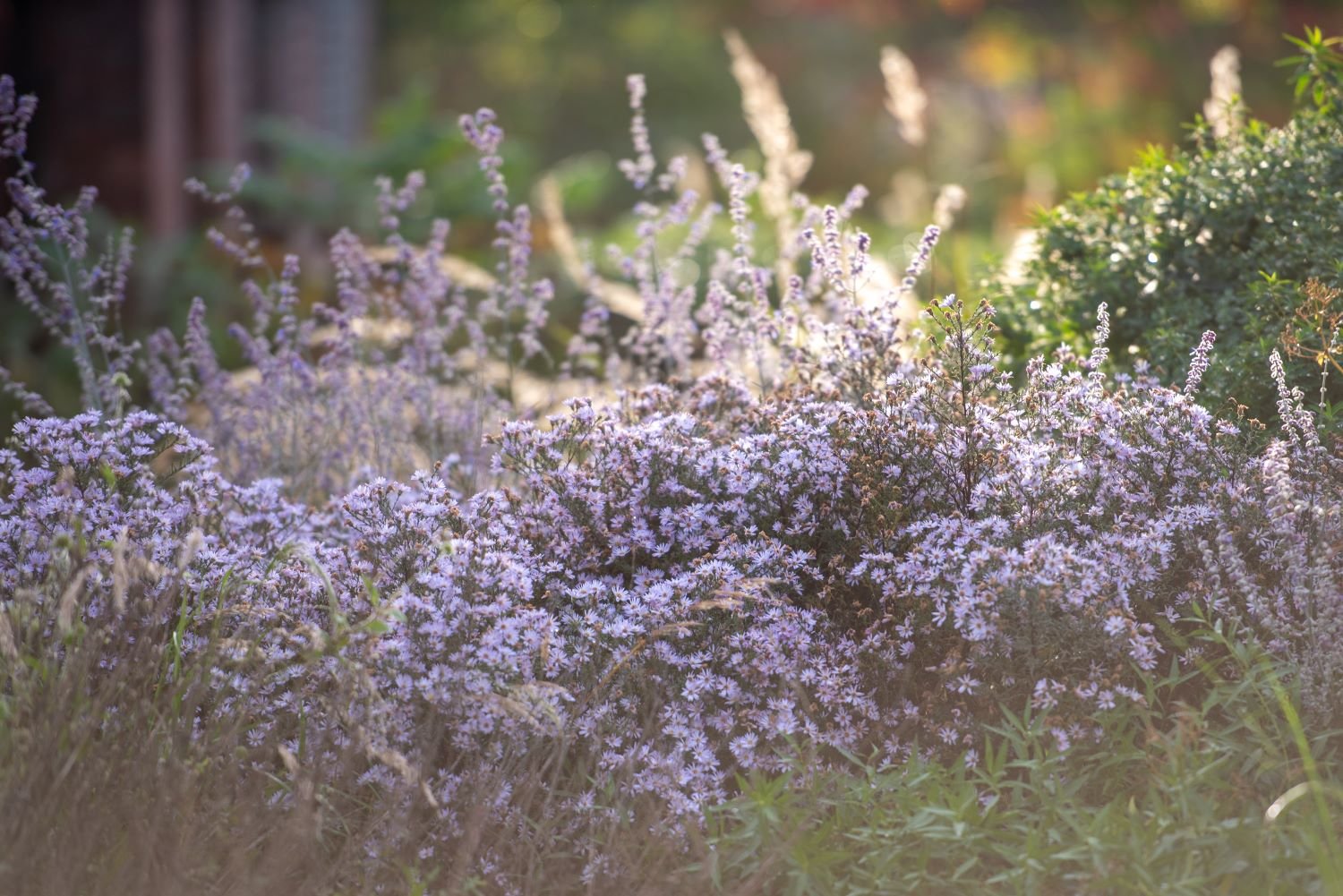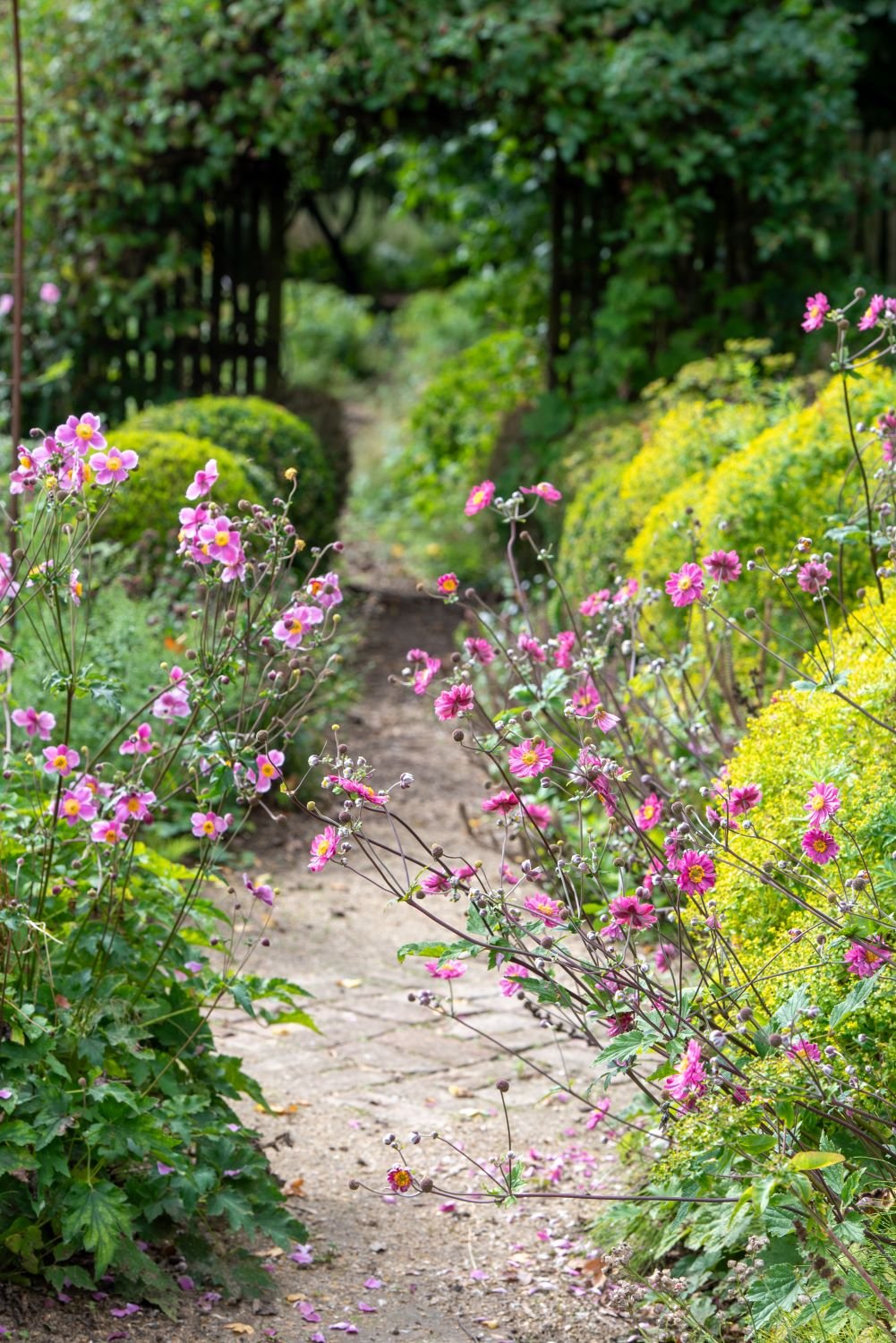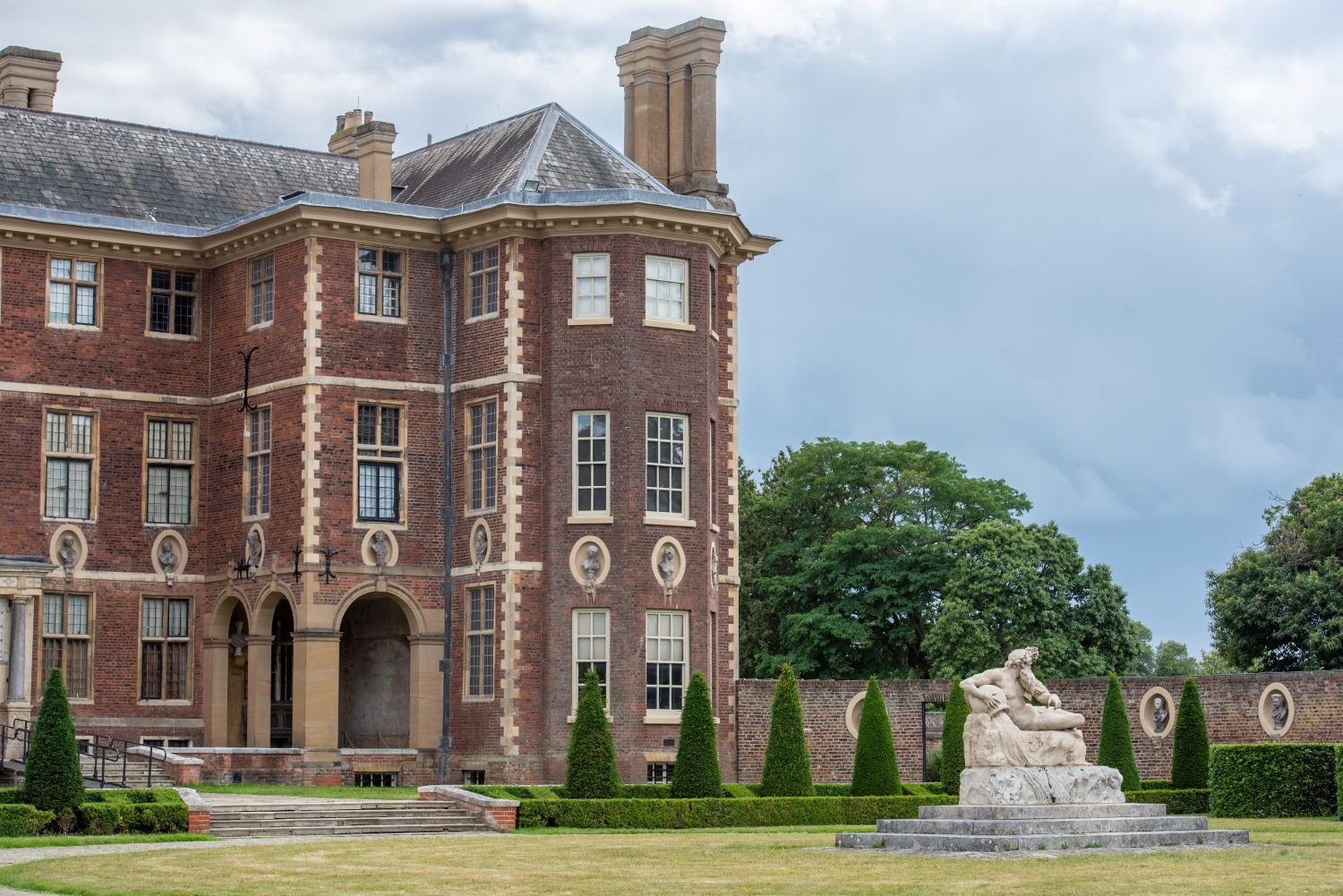My top ten garden books
It’s winter. I’m not a great one for curling up by the fire with a seed catalogue. They’re usually very wordy, short on pictures, with anodine sowing and cultivation notes. A book about gardens, or plants, plant hunting or gardening however, is much more cup of tea. But so much depends on the author and, naturally, the photographer.
First off, the books I use the most for my work. No, they are not technical tomes about soil composition of how to haunch the edge of a patio, but primarily books about plants.
The most thumbed book on my whole bookshelf is Right Plant Right Place by the late Nicola Ferguson. The phrase was first coined by Beth Chatto, if you plant something in the best possible position for it it (almost) can’t fail. And the most referred to chapters are those about planting in shade. London gardens are notoriously shady, be they in the shadow of tall buildings, neighbours’ trees or even their own fences. Every garden has got a slightly unloved corner where it would seem almost nothing will thrive. Beth Chatto might have had the number on planting under trees in her Woodland Garden book, but Nicola trumps her when it comes to dry shade and dense shade. Other valuable chapters are on plants for heavy clay soils and long flowering perennials.
Once I’ve made a selection for a garden I like to have a quick look at Christopher Lloyd’s Garden Flowers. No glamorous photos here but at times quite a witty take, and 70+ years of experience, on the delights or failings of many popular garden flowers. Recently, in looking for spring bulbs for a client I came across his description of Camassia quamash, “whose Indian (native American) name, quamash, indicates their edibility with its onomatopoeic, scrunching sound.” He admits to making that up but thought it should be true. Not that I agree with him all the time, one of my favourite flowers, the bright blue Catananche caerulea, is described as “a mildy pleasing but second-rate plant.”
The third of this trio of reference books is Barchams Time for Trees. Barchams is the tree supplier to the King, and the Queen before him. Obviously there’s some self-interest in this book and I was given it for free at a trade fair. However, it has lots of photos and good descriptions of hundreds of garden trees. It is particularly good at describing many different culitvars, I can’t tell you how useful this is when eyeing up several different varieties of cherries or magnolias say. It’s much easier to compare and contrast with a book than it is online.
Now for a bit of garden writing. I’m reminded of the quote that “writing about music is like dancing about architecture” and so how can writing really convey to the reader anything about a garden? The answer is, in the way that detective novels are fascinating but do not reveal the true awfulness of a murder, garden writing is enjoyable without actually having to get dirty or cold and wet or do your back in or weed that border for the nth time … Here are three that I’ve really enjoyed.
Back in the day when people actually wrote letters, and complete sentences, Christopher Lloyd and Beth Chatto enjoyed a very lengthy correspondence. Subjects ranged from writing about their own gardens, each other’s gardens, lots of other gardens, lots of (to my mind) unfathomable advice and there’s some terrific name-dropping thrown in too. The resultant book, Dear Friend and Gardener, is so good I’ve got two copies.
Sadly it seems most of the writers featured so far are no longer with us. Both Christopher Lloyd and Beth Chatto lived to ripe old ages at least, proving that gardening is indeed good for you. Elspeth Thompson, in the ordinary course of events should still be alive, but she suffered from depression and took her own life at the age of 49. Gardens can’t heal all it seems. She left two books, the first of which is The Urban Gardener, three years of Telegraph columns about the trials and triumphs in her garden and allotment in inner city London.
This brings me to my third choice for garden writing, Sue Stuart-Smith’s The Well-Gardened Mind. Sue is married to the Tom Suart-Smith (more of him later) and is a psychiatrist. In an age of well-ness, biophilia and other 21st century tropes, here is an evidence-led exploration of not only why gardening is good for you, but how gardening is good for you. Thankfully this is not a self-help book but is rewarding and uplifting with lots of case studies.
The final group of books are ones I turn to in need of inspiration or just a dose of garden porn if you like. None of these bears any relation to either my own garden or indeed the suburban gardens I design. I can but dream…
First up, Tom Stuart-Smith’s Drawn from the Land. Beautiful gardens and beautiful photography. The gardens range from award winners at the Chelsea Flower Show, London courtyards, country house gardens, a Moroccan paradise garden, arid Mediterranean hillsides and many gardens open to the public. I’ve been lucky enough to see a few of these in the flesh and he never disappoints.
Another monograph I’ve enjoyed is The Gardens of Arne Maynard. Much more associated, in my mind at least, with the gardens of ancient houses and landscapes. Unashamedly romantic and definitely not low maintenance, he particularly favours old fashioned roses, topiary and often features bucolic kitchen gardens. I’ve also seen a couple of his gardens, including his own in Monmouthshire which is one of my favourites. The photography, mostly by William Collinson, is lovely.
This next one is a bit left field and never in my wildest dreams would I ever be asked to design anything in this sort of landscape, let alone with this level of style and minimalism. The Desert Gardens of Steve Martino are designed and built in the semi-desert-like region of south-western USA. An early pioneer in the use of native plants adapted to the arid landscapes which are sometimes subject to heavy downpours, his gardens use walls to construct views and create privacy to making beautiful minimlaist outdoor rooms. If you want to see gardens which are the complete opposite of, say, Arne Maynard, this is the designer to look at. Fabulous photography by Steve Gunther.
My last choice, published earlier this year, is Wonderlands. Written by Claire Coulson and photographed by Eva Nemeth, it is an exploration of the gardens of some well-known and not so well-known British garden designers. I was in two minds about including this book as mostly I feel deep seated envy when I look at this book. Included are the gardens of Tom Stuart-Smith and Arne Maynard. Interestingly, few of these designers admit to having any plans for their own gardens. They’ve taken a more experimental and leisurely approach, unpressured by a deadline or a budget or a client brief. Even so, there are deep echoes of their professional work in their own gardens.
The joy of allotmenteering
Every summer our group of park gardening volunteers organises a walking tour of some of our own gardens. This summer we visited two allotments gardened by three of our group.
Allotments seem to be a uniquely British institution. Small areas of land are rented, usually from the local council, to grow fruits, vegetables and plants. Some people keep bees and hens and grow flowers for cutting. Allotments can vary in size but usually measure ten rods or poles, which is around 250 square metres.
Allotments have their origins in the late Anglo-Saxon/early medieval period when large fields were divided into thin strips for individuals or families to grow crops. This was known as the open-field system.
By the late 1500s these fields were divided up to be used only by the owner. They were then enclosed through a series of Acts of Parliament. In compensation, ‘allotments’ of land would be attached to tenant cottages - the first written reference to allotments in the UK.
Allotments as we know them today stem from the General Enclosure Act of 1845 that made provision for ‘field gardens’ to be used by the landless poor—although very little enclosed land was actually set aside for this purpose. The later ‘Small Holdings and Allotments Act’ of 1907 and 1908 imposed responsibilities on councils to provide allotments if there was a demand for them.
There was a huge increase in allotment use during the First and Second World Wars due to the shortage of imported food. Disused railway land, public parks and private gardens were all used to grow fruit and vegetables. The ‘Dig for Victory’ in the Second World War produced 1.3 million tonnes of food from 1.5 million allotment plots.
There was a steady decline in allotment use after the wars but this slowed during the 1970s when TV shows like the BBC’s The Good Life inspired interest in food production and self-sufficiency.
Since the 1990s, there has been a lot of renewed interest with concerns about climate change and foodprovenance, and the benefits of spending more time outside means that demand has rapidly oustripped supply.
The waiting list for the allotments in these photos can be up to eight years. Increasingly there is pressure to change the use from allotments to housing. Recently there has been an increase in the number of private allotments. The cost of these is significantly higher than council-owned ones.
In Merton there are only three council owned allotments and new applications are no longer being accepted. From the statistically insignificant sample of the one allotment site I visited I would say around 20% of the allotments looked they had been abandoned.
It seems to take a long time for these to be declared available for new users. Allotments can deteriorate quickly, becoming invaded with pernicious weeds (and wildlife). It can take six months of hard slog to clear the ground of brambles, bind weed, even himalayan balsam, requiring a lot of determination to keep going.
On the plus side you may inherit established perennial plants such as fruit trees and currant bushes. You may also inherit the shed (every allotment has one) in any state of repair, and assorted accumulated allotment accoutrements such as old baths, gazillions of bamboo poles, untold plastic pots but also greenhouses, paths, edging and well-rotted compost.
Many people take on allotments as they’d like to grow their own food. However, it is apparent that the community of allotmenteers keeps people going. There is lots of advice (whether you want it or not), community get togethers and community resources to share (the wild blackberries and large manure heap here spring to mind).
To the causal observer allotments can look a bit of a mess. Allotmenteers are nothing if not thrifty and resourceful, making use of many household items that might otherwise be thrown away. However, they are also havens of peace and quiet, full of wildlife (mostly welcome…) and provide a much needed escape from urban life.
Long live allotments!
Waterperry Gardens
Waterperry Gardens, in Oxfordshire, is a veritable cornucopia of all things horticultural, edible, cultural and shoppable. The gardens themselves are extensive and would need a visit of several hours to do them justice.
The Truth Trail
The Gardens rose to fame in the middle of the 20th century as a residential horticultural college for women run by Beatrix Havergal (allegedly the inspiration for Roald Dahl’s Miss Trunchbull). The college closed on the death of her life and business partner, Avice Sanders, in 1971.
The Herbaceous Border
Beatrix and Avice originally founded the school in 1921 at Pusey House in Oxfordshire and moved to Waterperry Gardens in 1932. At the time it was rented from Magdelen College.until they bought it in 1948. All students paid their own fees until 1958, when scholarships were granted by some county councils. The diploma was accepted as one equal to those issued by Kew and Edinburgh. Beatrix was awarded an MBE in 1960 and the Royal Horticultural Society Veitch Memorial Medal and Victoria Medal of Honour in 1965. For many years Beatrix won gold medals for her strawberries at Chelsea Flower Show.
The Herbaceous Border
The property was bought by The School of Philosophy and Economic Science in 1971. Beatrice and Avice’s garden has been maintained as they knew it and it has also been extended in scope and content, although it is not clear what is original and what is new.
The canal
The gardens are large and quite varied. You are guided into the gardens along the Truth Trail, over a bridge and through light woodland. Under another bridge the long herbaceous border suddenly appears. It is banked up on oneside alllowing plants to tower over the pedestrian.
Silent Space
The Formal Garden was created by Bernard Saunders and Mary Spiller, a former student and then tutor at Waterperry Horticultural School. The sculpture, Girl holding the Lamp of Wisdom, is by Nathan David. It is a Silent Space, part of a network of gardens of where people can be silent and switch off from the outside world and to take time to reflect.
The Colour Border
The Colour Border
I particularly enjoyed the Colour Borders - these colour co-ordinated mixed borders make use of perennials, shrubs, bedding and bulbs to give all year round colour and interest.
Modern Border
Modern Border
The Modern Borders look good at the end of summer with grasses and later flowering perennials. The wavy edges are reminiscent of the 1970s.
Walled Garden
Walled Garden
Walled Garden
The Georgian Walled Garden has been recently made over as a cutting garden. The deep borders of Dahlias are pretty spectacular as are the beds of colourful annuals. I managed to miss The Mary Rose Garden, Yew Henge and orchards - more to see on another visit, perhaps in the spring.
Beyond the gardens there is a nursery, shops of varying descriptions, art gallery, museum, cafe and outdoor theatre. I didn’t have time to try the cafe. It would be worth taking a picnic as its a long walk to the cafe if you want refreshments part way through your visit.
Winter flowering plants
Cyclamen hedifolium
I’ve long been an advocate of the view that a garden is more spectacular if it enjoys peaks and quiet times - masses of height, structure and colour in high summer with a quiet, muted stillness in winter. So much more in step with nature, a reflection rather than a counterpoint.
Galanthus nivalis
However, even I am not completely immune to the charms of winter flowering plants. If I had the space I’d probably plant a winter border, full of dogwoods, Japanese maples, frost coloured brambles and witch hazels, to be viewed across a broad lawn from the warmth of a large orangery. But that’s in another life.
In a more modest garden I’d be content with one or two winter jewels, flowers to be viewed and indeed smelled close up. Many winter flowering plants are subtle in colour, small and highly scented.
Cyclamen hederifolium
Winter is a curious time in the garden. Beneath layers of dead leaves and collapsed foliage the garden just gets on without you. And by garden, I mean that in the widest sense, not just the cultivated plants, but birds, insects, small mammals (larger ones too if you have foxes), fungi, microbes, bacteria and water.
To the casual observer the garden is static in winter. The garden’s soil is a hive of microbial activity, even in cold weather. Beneficial bacteria and fungi continue breaking down organic matter, enriching the soil with nutrients essential for plant growth. Worms and other decomposers thrive under the surface, aerating and improving the soil structure. Winter is also a critical time for wildlife. Birds forage for food, insects seek shelter in plant debris, and hedgehogs hibernate. Leaving areas of the garden slightly untidy – with piles of leaves or hollow stems – provides essential habitats for these creatures.
Eranthis hyemalis
Tempting though it might be to rush outside on a mild day, secateurs and pruning saw in hand, it’s mostly best to do nothing. And especially do nothing to evergreen plants. A frost just after you’ve pruned something can be highly damaging to most plants
Helleborus x hybridus
The first winter-flowering plants that come to mind are the small, ground-hugging perennials that you have to seek out and really get close to. Snowdrops are an obvious choice and I wrote about them here last year. Like snowdrops, pink and white Cyclamen hederifolium and bright yellow Eranthis hyemalis, or winter aconites, look more impressive planted in numbers. They both take a while to establish but will self seed if left undisturbed so this makes them ideal for planting under deciduous trees.
Helleborus x hybridus (also known as Lenten roses, though they are rarely in flower at Easter) hybridise easily, making them popular with collectors. The colours vary from white and pink, yellow, to a steely blue, almost black and many spotted colourations. I usually cut back the old leaves in winter so that the flowers are easier to see. They are pretty unfussy about growing conditions.
Viburnum x bodnantense Charles Lamont
After more than two decades of “prairie” planting, shrubs are enjoying a revival. Valued for their height and structure many shrubs need little maintenance, especially if planted in the right place. They’re also great hideouts for small birds. Most Viburnums are winter-flowering but not all are highly scented. V. bodnantense Charles Lamont has clusters of small pink flowers on bare stems from November to March. Reaching in excess of 2m in height, their foliage also has good autumn colour.
Lonicera x purpusii Winter Beauty
Winter-flowering honeysuckle, Lonicera x purpusii Winter Beauty, is a shrub rather than the usual sprawling climber. It too, bears flowers on bare stems, doing better in a sunny spot rather than partial shade. The nectar is a particular favourite of bumblebees.
Chimonanthus praecox grandiflorus
The common name of Chimonanthus is wintersweet, reflecting its strong scent. The bright yellow flowers are small, but en masse, they can light up part of the garden on a dull winter’s day. It will enjoy a sunny spot and as the summer foliage is not particularly striking make sure it’s planted with something more interesting.
Daphne Perfume Princess
Daphnes have the reputation for being difficult to grow. In my experience they are just very slow growing and patience is required for the plants to get a good size. These evergreens do have the most amazing scent though and the wait is worth it. Plant in well drained soil in dappled shade, they are not fond of heavy clay.
Mahonia x media Charity
I’m never really sure if I’m a fan of Mahonia or not. The flowers and scent are quite spectacular in winter but the dull, prickly leaves are less attractive in summer. M. x media Charity can be a bit of a bully, reaching up to 4m in height. It needs regular pruning to keep it compact but this can affect flowering. A new cultivar, M. eurybracteata subsp. ganpinensis 'Soft Caress', is more compact and the leaves are not at all spikey. I’ve planted a few recently but I’ve not seen any mature specimens yet.
Hamamelis x intermedia Pallida
When it comes to winter-flowering trees Witch Hazels reign supreme. Like Daphnes, they are extremely slow-growing and in most gardens are more like shrubs than trees. However, they don’t respond that well to pruning so make sure it is planted where it can grow to maturity. The flowers look like strands of saffron and, depending on the variety, range in colour from bright yellow to orange and a deep rusty red. In London one of the best places to see them is the Isabella Plantation in Richmond Park.
In my own garden I have snowdrops, Hellebores and some Cyclamen. If I had more space I’d definitely plant a wider range. They do get you out into the garden rather than just looking at it from the kitchen, or orangery, window.
Comissioning a garden designer
Many people contact me to enquire about making a new garden without really having any idea of what’s involved. They are often surprised about how long it takes and, of course, by how much it costs.
So what does it take to go from this?
A blank canvas, with seven manhole covers…
To this?
Three and a half years later…
First off, you’ve probably spent a lot of time looking at gardens and garden designers online. When you’ve found a garden designer you like the look of (or two or three) you’ll need to get in touch. Catriona, a career coach in Surrey, first contacted me in March 2021. After a phone call discussing the proposed project and, let’s be honest, a bit of sizing each other up, we met in April.
It was a long meeting, not just about the garden and what Catriona was looking for, but about what’s involved in the design, ways of working together, the fun of collaboration and some of the likely ups and downs of the process.
I prepared a proposal outlining all these things and referring to Catriona’s initial budget of £25,000. I knew it was going to be tight and, if you’re a fan of Grand Designs, you’ll know that’s usually just a starting point.
First off I carried out a survey of the garden. In Catriona’s case this was fairly straightforward and cost just a couple of hundred pounds. However, for more complex or larger gardens with lots of level changes or gazillions of trees I would use a professional surveyor and this can cost from £750 upwards.
The survey
This is when I discovered the back garden contained seven manhole covers.. what were the developers and builders thinking? I wanted the design to try and make these all disappear.
I prepared a Masterplan and some 3D sketches of how the back garden could look. In those days I did it by hand and kept the 3D sketches to a minimum. Now I use 3D software and produce as many views as is useful, and even 3D walkthroughs of the new garden. I think clients prefer this, particularly those who find it difficult to visualise the finished garden from a plan.
Masterplan v1
The cost of this varies according to the size and complexity of the garden and proposal but usally starts at around £2,000.
3D sketch
Catriona and I spent a lot of time discussing the design at this stage and I made some changes, getting rid of a proposed wildflower lawn and replacing it with a conventional one. This compromise did mean that one of the manhole covers was going to be slap bang in the middle of the lawn rather than hidden amongst the wildflowers.
This stage, which is sometimes lengthy and frustrating, is crucial to ensure the design delivers what the client wants and will still result in a beautiful and achievable garden.
Masterplan v2
After this I produced some detailed drawings with accurate measurements and a specification including choices of materials for the contractor. Clients tend not to find this bit very interesting but it is crucial to ensure the garden is built as designed and costed correctly.
One of the more detailed drawings for the contractor
Next up, I asked my contractor, Vlad the Landscaper, to visit the garden, look at the design, meet the client (more sizing up..), sus out any potential problems I had missed, and prepare a quote. Here, Vlad proposed filling a small dip along one boundary and raising the fence up to make the garden completely level. A bit more money but a really good suggestion.
Of course Vlad’s quote was a bit more than we hoped. There was some tooing and froing over some minor elements and in the end agreement was reached and a start date proposed.
Anyone who’s ever embarked on a building project will know you never know what you will find. Here Vlad found that the drainage underneath the builder’s patio was too shallow to put a properly installed terrace on top of it. It also explained why Catriona’s drains sometimes backed up.
What lies beneath…
Vlad is a resourceful chap and after some further negotiations he was able to re-set the drainage pipes at a lower level, resulting in a fab terrace and no more backed up drains.
Construction continues - two of the manhole covers are hidden in the paving
The rest of the construction proceeded without any further issues. In the meantime I had put together a palette of potential plants for the garden. Catriona and I discussed this, making some minor changes, and then I produced a planting plan. This is another drawing that clients find quite dull but it is important to work out how many plants are needed and where they will go.
Part of the plant palette
Then I worked out an estimate for the cost of the plants. Thanks to Covid and Brexit the cost of plants has shot up substantially in the last four years. Catriona is a champion online shopper and managed to find a cheaper supplier for the seven new trees. I ordered the rest of the plants. The plants for this garden cost around £7,000 in 2022.
Par of the planting plan
Luckily Vlad was around to plant all the trees, and the rest of the plants took a day to set out in position and then plant.
Six weeks after planting
The garden was almost complete. The last element to go in was the waterbowl which took forever to be delivered. And later Catriona added a semi-circular bench to go under the Prunus serrula. She also tracked down a much wanted tree fern that you could not buy for love nor money for some time after Covid as Australia stopped exporting them.
The first summer
All in all, it took 11 months for Catriona’s garden to go from first contact to completion.
You might think this would be the end of my involvement in Catriona’s garden but far from it. Although Catriona had had a garden designed before it was much smaller. She had a lot of concerns about how to care for the plants and I think initially found it quite daunting learning all their names and needs.
The second summer
I have made many visits to the garden over the last three years. I have been back to take photos of course, but also to check on how things are doing. We did the spring cutting back of all the perennials together so that Catriona would know how to do it on her own next time.
We have also discussed replacing some plants which for unknown reasons have failed to thrive or Catriona has decided she’s rather have something else.
August 2024
I think Catriona underestimated how much attention the garden would need, particularly in the first couple of years. However, she also underestimated how much she would enjoy getting involved in the garden - weeding, dead-heading, watering, mulching, pruning - just spending time in it everyday, even it’s just a quick look round.
Catriona’s front garden
And I definitely underestimated what an amazing job Catriona would do looking after it. She has since undertaken the planting design of her front garden and it’s turned out really well.
Catriona’s wildflowers
Catriona’s very proud to show the garden off to family and friends. I think the total cost was around £30,000 which she thinks was money very well-spent.
And what of that rogue manhole cover? First we painted it black, then green and eventually it was covered in artificial turf. Finally, an appropriate use for artificial turf in a garden…
See more of Catriona’s garden here.
Nymans
I think Nymans might be the first National Trust property I’ve been to where its all about the garden rather than the house. The garden is grade II listed, and the house is mostly a ruin.
View of the house from the South African bed
The 600 acre Nymans estate was bought by German emigre Ludwig Messel in 1879 and was occupied by his descendants, even after the devastating 1947 fire. It was handed over to the National Trust in 1953.
The summer borders
Unlike many houses devastated by fire this one has been left standing. It’s been cleverly planted with architectural and evergreen plants lending it the air of a gothic folly.
Architectural and evergreen exotic planting
If you go on the walking tour they will take you into a newly planted part of the great hall. It references Oliver Messel, the theatrical designer and Ludwig’s grandson, with corten screens and architectural planting, all in containers.
Tetrapanax, Cordyline and Wisteria
Yew topiary againt the house
The Forecourt Garden in front of the house is planted with topiary and naturalistic looking borders. In one corner is an attractive stone dovecote.
Achillea and scabious in the Forecourt Garden
Naturalistic planting in the Forecourt Garden
Topiary in the Forecourt Garden
The Dovecote
Ludwig Messell and his head gardener, James Comber, were avid plant collectors and breeders. The garden hosts many plants from the southern hemisphere, notably from Chile and Argentina. A large part of the garden is dedicated to plants from South Africa such as Dierama, Kniphofica, Berkheya, Watsonia and several Restios.
Berkheya and Dierama in the South African bed
The Rock Garden
The Rock Garden and lookout
The Rock Garden is a bit more rock star than your average 1970s effort, not least because of its scale. Aside from the expected heathers (many different varieties) but many Mediterranean plants like Santolina, Phlomis and the odd Trachycarpus thrown in for good measure.
The Rock Garden and Croquet Lawn
This is one of the very few National Trust gardens that I have really enjoyed. It is definitely worth another visit to see the Rose Garden, wildflower meadows, Wild Garden and the Wall Garden, all a bit earlier in the summer. The Pinetum is a really good example of its kind as well.
There are lots of opportunities for refreshments if you are not bringing your own picnic. I’d say it is one of the better NT cafes as well. Oh and there’s an excellent secondhand bookshop, definitely worth a look.
Le Chateau du Lude
On a short holiday in the Loire region of France I convinced myself there must still be a hidden gem of a garden that I hadn’t visited.
Le Chateua du Lude
Having done Villandry, Chaumont and Chenonceau I had to travel north to the banks of the other Loire valley river, Le Loir, and Le Chateau Du Lude.
Rose Garden
Le Lude is the most northerly château of the Loire Valley and has been inhabited by the same family for the last 260 years. The gardens have evolved to combine French design and an English-style landscape, with a rose garden, topiary, a labyrinth and a botanical walk. And an unpublicised organic kitchen garden.
Lower Garden
The lower garden running along the river, was the original vegetable garden. This was moved further away to create a romantic French-style garden designed by Edouard André a renowned landscaper in the 19th century. Parterres of flowers and ponds succeed each other, with scented flowering shrubs like chimonanthus, lilac, philadelphus and calycanthus along the wall.
The fields opposite were planted as a landscape park.
Lily pond in Lower Garden
The spring garden is full of early perennials but these were mostly over at the time of my visit in June.
Fountain in Lower Garden
Le Loir from under a copper beech
So far, so French. Not too much in the way of flowers or colour after the slightly past-it rose garden. And then I noted there was a kitchen garden.
The Kitchen Garden
It was midday as I arrived as the gardener was locking the gates to the obviously “prive” kitchen garden. Somewhat crestfallen I mustered a smattering of pidgin French to explain I was a garden designer and just wanted some photos. Eager to get to his lunch he opened the gate for me and asked me to lock it when I was finshed. I can’t imagine the National Trust doing that.
A mixture of flowers and fruit and weeds, well it is organic..
Fruit trees in the Kitchen Garden
Sisyrinchium striatum, phlox and California poppies
Orangery, used as a tool store
The Kitchen Garden was the most floriferous part of the gardens, the informality of the planting here is in stark contrast to the more formal areas elsewhere.
Birdbox in the kitchen garden
I would say the garden at Le Chateau du Lude wasn’t quite the hidden gem I was hoping for. Having said that I spent a pleasant couple of hours here. It’s not as busy as all the better known gardens in the Loire and I was grateful for that. There are no refreshments available so you’ll need to bring your own. And, of course, it’s not open at lunchtime…
Website https://www.lelude.com/en/
Project Giving Back - Chelsea 2024
In any other year a damp, grey day at the Chelsea Flower Show would have been unusual, not in 2024 though. Whilst most humans aren’t that happy in the rain, gardens absolutely love it. Colours are more vibrant and plants look much fresher.
The Octavia Hill Garden by Blue Diamond with the National Trust
In recent years there have been far fewer large show gardens on the main avenue, and now all are sponsored by charities rather than big corporates. This is in no small part as a result of Project Giving Back.
The WaterAid Garden
“Project Giving Back is the vision of two private individuals who want to support a wide range of charitable causes whose work suffered during the global Covid-19 pandemic and continues to be affected by the economic downturn and cost-of-living crisis.
World Child Cancer’s Nurturing Garden
The grant-making scheme gives UK-based charities and other charitable organisations the chance to apply for a fully-funded garden at the RHS Chelsea Flower Show, subject to the usual RHS selection process. This is a unique opportunity for charities to raise awareness of and support for their work at the world’s most famous horticultural event.”
Muscular Dystrophy Garden
The first Chelsea Flower Show to benefit was in 2022, and 12 gardens were supported. The most well-known of these was the best in show garden by Lulu Urquart and Adam Guinness - remember the controversial re-wilded garden for beavers?
The National Garden Scheme Garden
Most of the plants from this garden (there wasn’t a lot of hard landscaping) went to the Lindengate garden in Wendover, Buckinghamshire. This mental health charity uses its six acre garden to provide social and therapeutic horticulture to people of all ages.
Terrence Higgins Trust Bridge to 2030
A further 15 gardens were supported in 2023, including another best in show winner, Horatio’s Garden, designed by Charlotte Harris and Hugo Bugg.
St James’s Picadilly: Imagine the world to be different
Horatio’s Garden is a charity set up to provide gardens for people with spinal injuries and the show garden has gone to the Princess Royal Spinal Cord Injuries Centre in Sheffield, opening later this year.
The Anywhere Courtyard
In 2024 another 15 gardens were supported, including yet another best in show garden, the Muscular Dystrophy forest bathing garden designed by Ula Maria. This garden will be relocated to The Prince & Princess of Wales Hospice in Glasgow.
mgr Changing Tides Garden
It’s quite a complicated process moving a show garden to its final home. Inevitably there is an element of redesign to fit the new space and in the meantime both the hard landscaping materials and plants may have to be stored before they can be re-used. Some new elements may be incorporated as Chelsea Show gardens are for May, not really for 12 months of the year.
Stroke Association’s Garden for Recovery
Project Giving Back is scheduled to continue for a further two years. It’s a good fit with the RHS’s ethos of sustainability and trying to keep the Chelsea Flower Show as green as possible.
Sue Ryder Grief Kind Garden
Project Giving Back also provides support for garden designers, helping those with a good idea find a charitable partner to link up with, and it also helps newer designers get into Chelsea for the first time.
Bowel Research UK Microbiome Garden
All good things usually come to an end though, so how will the RHS find sponsors with pockets deep enough for a £250,000 show garden once Project Giving Back ends after 2026?
Isabella Plantation
It’s very easy to visit Richmond Park regularly and completely miss the Isabella Plantation. The deer are kept out of this part of the park, allowing for a wide variety of trees and a more garden-like feel.
Principally a woodland garden, it is in spring that the many flowering shrubs and trees come to the fore. There are witch-hazels, camellias and magnolias in early spring. In April and May it is the turn of azaleas and rhododendrons. Get ready for a technicolour tour.
The garden is home to the National Plant Collection of Wilson 50 Kurume Azaleas, introduced to the west from Japan in the 1920's by the plant collector Ernest Wilson. If you want to identify them all this website has the definitive list.
The Isabella Plantation sits in a natural dip and running and still water throughout is a major feature.
Most of the water features are man-made, water is pumped from Pen Ponds and the streams were dug out in the 20th century. The lower part of the Plantation is naturally boggy and the garden plants here reflect that with asiatic primulas, gunnera and this rather fantastic Darmera peltata.
Isabella Plantation has been subject to some significant investment in recent years. Ponds have been cleared of silt, the remaining invasive Rhododendron ponticum has been cleared out, along with rampant skunk cabbage. And the paths and loos have been upgraded. If you’ve got a blue badge you can park very close by and all the paths are acessible with a wheelchair. Dogs on leads are allowed.
Most people know that I’m not a big fan of rhododendrons, particularly in smaller gardens. Where they’ve got space to do their thing though they look majestic. I like seeing them in dark groves where they can look moody and mysterious, particularly on a gloomy day.
And just occasionally you come across some very delicate flowers, completely different. Unfortunately I cannot find the name of this one.
Crocus time
when you come across a lawn of crocuses in their tricolour array of white, yellow and purple it can stop you in your tracks
I used to be a bit dismissive of crocuses, not really worth the effort I thought. But an amazing display in my local park last year changed my mind.
Snowdrops are exciting because there’s almost nothing else in flower at the time. But they’re white and you have to get down on your hands and knees to see them. Don’t get me wrong, I think it’s worth the effort, but when you come across a lawn of crocuses in their tricolour array of white, yellow and purple it can stop you in your tracks.
Crocus Pickwick
Crocuses are easy to grow. They don’t mind sun or a bit of shade, as long as the soil isn’t too wet in winter. They do well under deciduous trees as the have finished flowering by the time the trees have leafed-up. They also look good in grass and as they die back earlier than daffodils they don’t interrupt your mowing regime as much.
Crocus tommassianius Barr’s Purple
Although crocuses are very tolerant of the vagaries of British weather they will only open up in the sun. They are an early source of nectar and are magnets for bees on warm sunny days. And they can have a tendency to keel over in heavy rain.
Introduced to Britain by the Romans, the saffron crocus, Crocus sativus, was used as a dye. There are over 200 named varieties of crocus. Their taxonomy (classification) is complex and has changed many times since the Romans.
We are used to seeing crocus as small bright pops of colour in our gardens but some gardens showcase them in style by planting literally thousands (maybe hundreds of thousands). One of the most magnificent spectacles is at Ham House in London.
Ham House gardens
Ham House gardens
Even the most meticulous plans can experience the odd hiccup however.
Ham House gardens
If you haven’t got acres to show off your crocuses they look pretty good in pots, especially when combined with other early spring bulbs. I found all these at Sissinghurst just before the first lockdown.
Crocuses also come in yellow by the way, I just don’t seem to have many photos of them.
The cooler weather means crocuses will still be looking good for a couple of weeks yet. Some good places to see them:
Ham House - free with a National Trust card
Sissinghurst - also National Trust
Kew Gardens - naturally
Inkpen Crocus Field in Berkshire
Snowdrops galore
December and January can sometimes feel completely dead in the garden. So when the first snowdrops appear in February it is easy to get excited about a tiny white flower. Barely taller than 15cm, but usually in clumps, snowdrops can make galanthaphiles and photographers fall to their knees to get a better look.
Contrary to popular opinion the common snowdrop, Galanthus nivalis, is not a native plant but has become naturalised in woodlands and gardens across the whole of the British Isles. Originally it hails from further south in Europe, from Spain to Ukraine.
Snowdrops are bulbs, generally flowering between January and April. February is the peak month in the south of England. They cross-pollinate easily hence the huge number of varieties and the zealousness of galanthophiles to spot the next new snowdrop.
Christopher Lloyd thought “all of us need more snowdrops in our gardens”. I agree. Snowdrops grow well under deciduous trees where there is not too much competition from grass. The shady, bare spots next to hedges are also good and snowdrops will do well in areas where they will not be disturbed and can distribute their seeds on bare ground.
Generally, only the single-flowered varieties are fertile and will spread by seed, the doubles are usually sterile. Snowdrops planted on drystone walls may self-seed themselves on the face of the wall.
Snowdrop bulbs are easily available to plant in the autumn. They usually take a year or so to settle down and flower. I’ve had more success planting snowdrops “in the green”. Last winter my dad gave me several handfulls from his own long-cultivated clumps and almost all of them have come up in my garden this winter.
Although I really like Snowdrops I’m not that fussy about what sort I grow. Galanthophiles will pay hundreds of pounds for the rarest specimens. Good for them.
“Wild” snowdrops are a bit like bluebells, you’ve got to know where to look for them and once you’ve found them, keep it a secret. I’ve been collecting photographs for some years and these are from private gardens, public gardens, churchyards, woodland and parks.
If your collection of snowdrops doesn’t quite fill your field of vision they also look good planted in a woodland or winter garden. Try them with hellebores, ferns, cyclamen, winter aconites, arum lillies, primroses and pulmonaria.
Many open gardens have collections of snowdrops, sometimes in winter gardens, often dotted around. The best known place to see them is Welford Park near Newbury; others include:
2023, a year in photos
I googled “what will 2023 be famous for?” There were some forecasts - war, climate catastrophe, financial turbulence and technological change - so far, so predictable. But a fashion trend for blackened teeth thankfully hasn’t come to pass (or did I miss it?).
Wimbledon Common in January
The year started with a famously cold January. It was a near record of eight days in a row of freezing temperatures. Whilst Wimbledon Common looked fab in the heavy frost the weather took its toll in the garden. Many people lost plants, in particular Hebes, Erigeron karvinskianus and Penstemons. They were hard to replace initially as the frost had affected so many gardens as well as suppliers in the UK and Europe.
Cyclamen at Wakehurst Place in February
One answer to this is to plant a winter garden, full of plants that look their best at this time of year. I went to visit Wakehurst Place which has a fairly new winter garden. It didn’t disappoint and partly as a response to this we have developed a couple of winter borders in my local park.
Magnificent magnolia in Bushy Park in March
A persistent easterly wind in March and April meant that spring felt like a long time coming but finally, after a few false starts, I got on a plane for the first time in three years to go to the garden island of Madeira.
Fanal Forest, Madeira, in April
There were gardens aplenty on the island but one of the most fascinating sights was the ancient laurel forest on the north slope. Subject to frequent fog and mist the trees were already mature when the Spanish arrived in the 14th century. It is an eerie place and, as I found, it’s very easy to get lost.
Bluebells in the Surrey Hills in May
May was a busy month. The weather warmed up a little and I found a great new bluebell wood in the Surrey Hills. The sun also came out for the Chelsea Flower Show and there was only one garden everyone was talking about - Sarah Price’s iris garden. It wasn’t overrated, almost worth the ticket price on its own.
Chelsea Flower Show in May
Also in May I finished planting a new garden in Wimbledon. Throughout the year I have continued as a volunteer gardener in my local park. Luckily the summer wasn’t quite as scorching as 2022. The ox-eye daisies in a wildflower part of the park were stunning in June.
Ox-eye daisies in June
All through 2023 I have been learning how to use a 3D design software package. It has been challenging to say the least but considerable progress has been made. I’m not sure I’ll ever reach guru status, but it’s good to get to a stage where clients can see their prospective gardens in 3D and even walk through them. I haven’t had a client yet say they prefer the old hand-drawn way of doing things.
Cedar greenhouse in July
In July I caught up with a friend who I’d helped with the layout of her garden ahead of the installation of a new greenhouse.
Waterperry Gardens in August
In August there was an overload of garden visits to Ham House, Waterperry Gardens and the best garden I’ve seen in a long time, Le Jardin Plume.
Le Jardin Plume, Normandy in August
Whilst in France I also visited the garden festival at Chaumont and the formal gardens at Chenonceau.
Chenonceau in September
Autumn took a long time to arrive, an unexpected heatwave followed by what seemed like endless rain, and then finally, some spectacular colour. Piet Oudolf describes a fifth season, somewhere between summer and autumn. The garden at the Hepworth Wakefield is a great example of how good a garden can look at this inbetween time.
Allium sphareocephalon and Perovskia in October
And my photographic year ends there, somewhat abruptly. The big camera is out of action and the camera on my phone doesn’t really cut it as a replacement. Normal service will be resumed shortly, hopefully in time for some winter photography.
Gifts for gardeners
It’s back, the only reasonably sensible list for gardeners of all types, no cashmere pyjamas or pink suede gauntlets here…
These are two of my favourite coffee table purchases of the year. I enjoyed my visit to Le Jardin Plume so much I bought the book. Yes it is in French but you don’t need to be fluent to get the gist of what’s going on. The photos tell the story, and the photos are fab.
I’ve been going to Kew Gardens since I was knee high to a grasshopper but only went into the Marianne North Gallery for the first time earlier this year. All of the 627 paintings - part botanical illustration, part travelogue - are reproduced here. Marianne North visited 13 countries and four continents in the second half of the 19th century and she paid for the construction of the gallery to house all her paintings. A major vanity project? And so what.
Sarah Price’s garden at the 2023 Chelsea Flower Show
Well no list is complete without a ticket to the Chelsea Flower Show. Is it expensive, is it over crowded, is it worth it? Hell yeah. The RHS runs one or two other shows which are all a bit cheaper, a bit less less busy and, well, you get what you pay for….
Looking for an easy way to boost your garden’s attractiveness to wildlife? Just add water. Birds, insects and mammals will all find a small pond very appealing. It doesn’t have to be deep, or have a fountain or even require digging a big hole.
A shallow water bowl or bird bath will do the job. A few pebbles and a couple of plants will finish it off nicely.
West Green House gardens and caff
Who doesn’t enjoy a nice garden visit with a fabulous lunch thrown in? Top of my list is Gravetye Manor (still waiting..), The Newt was fab and the cafe at West Green is a little more modest but no less tasty.
The restaurant at The Newt
Most gardeners are suckers for tools, especially really good quality ones. I’ve mentioned Felco secateurs before, as well as Showa 370 gardening gloves, Silky Fox folding saws, Hayter lawnmowers and Henchmen ladders.
Fab even when not in use
And they also love seed trays, garden twine, small terracotta pots, compost (but so awkward to wrap…), magazine subscriptions, bird boxes, seeds and cake of course.
Cedar greenhouse
But nothing says I love you like a bespoke cedar greenhouse…
And finally, what not to buy a gardener unless they have specifically asked for it - a plant. You have no idea how difficult it is to accommodate a rose that’s the wrong colour, or an inappropriately sized tree, into a carefully curated garden.
RHS Harlow Carr
A visit to Yorkshire to see friends meant a long-awaited trip to the RHS garden at Harlow Carr.
Harlow Carr
It’s a much more compact garden than Wisley, making it much easier to get around and see almost all of it. The garden was looking pretty good in the very bright and low autumn sunshine (not ideal for photography). It was a bit too early for good autumn colour in the arboretum but there was plenty going on elsewhere.
Aconitum
The long herbaceous borders were still looking colourful. I expect the very warm September had a lot to with extending the season.
Verbena bonariensis, Rudbeckia and Kniphofia
Persicaria
There’s a small stream running through the gardens and just uphill from this is a more traditional mix of shrubs, small trees and perennials, all looking great when back-lit with the low sun.
Hakonechloa macra
Astrantia major
Dawn redwood
Eryngium seedheads
Sidalcea
One of the things that surprised me and my southern view up gardening up north is how successful the salvias were. The gardens seem to showcase a lot of different varieties, from the stauesque Salvia Amistad and S. guaranitica Black and Blue, to the more shrubby Salvias such as Hotlips, Nachtvlinder and others I did not recognise. Who knew thse natives of the Americas, thought to be tender and prone to frost could thrive in this environment?
Salvia guaranitica Black and Blue
Shrubby Salvias
There was also a tropical garden, full of bananas, the regular Musa basjoo and the Ethiopian variety Ensete ventricosum. Admittedly these were accompanied by many coloured foliage plants like Coleus and the autumn colour of Cercis and Dogwoods. My friends are tasked with finding out if the bananas are left in all winter.
Tropical garden
Towards the lowest point of the gardens there is what looks like a white border. In autumn the grasses are the highlight, but I would like to see it when more of the perennials are in flower. The only flower on show in October was this stately Leucanthemum.
Leucanthemum in the white border
Harlow Carr is just outside Harrogate so it is no surpise to find all the catering is provided by Bettys. The queues are long so take a flask or do as I did, and get a friend to wait in line (thanks Rachel…).
Autumn colour
Harlow Carr - the gardens are open every day except Christmas Day
Bettys - they say there’s no need to book for the tea rooms but the long queues suggest otherwise…
The Hepworth Wakefield Garden
I was not overly hopeful of enjoying the Hepworth Wakefield Garden. Often gardens that seem good looking on social media are somewhat disappointing in real life. And the long journey up the M1 had been dreary and wet, compounding my low expectations.
The Hepworth Wakefield Garden
So it was a really pleasant surprise to find that it was all it was cracked up to be and, not only that, the sun came out just as I arrived.
The garden was designed by Tom Stuart Smith and according to thee garden’s website the “design draws inspiration from its unusual setting between 19th-century red-brick mills and a 21st-century art gallery. It echos the striking, angular shapes of the David Chipperfield-designed gallery while harnessing a naturalism that reflects Barbara Hepworth’s deep connection to the landscape.”
Rhus typhina and Aconitum
Construction began in 2019 and is planted with 14,000 perennials, 120 metres of beech hedge, 52 trees and shrubs and 60,000 bulbs.
Rhus typhina and grasses
In autumn the main features of the garden are the brilliantly-leaved Rhus typhina, grasses and various asters, all looking really good backlit by low autumn sun. I can’t say that Rhus is a favourite plant of mine, it has a tendency to sucker and spread, but in autumn the colour is hard to beat.
Rhus typhina
Phlomis russeliana seedheads
Asters and Echinacea seedheads
I sometimes find it hard to persuade clients that it’s worth planting for autumn colour and form. Despite the much-lauded value of grasses and seedheads it’s not until people see gardens like this in autumn that they become convinced.
Pennisetum and Salvia (formerly Perovskia) Little Spire
Back-lit grasses and asters
Euphorbia and Echinacea seedheads
More grasses and asters
One plant I was delighted and surprised to see in a public garden was the bright blue Aconitum. I’m not sure which variety it is but it’s stunning in the half shade under an oak tree. Most Aconitum are poisonous and although some have AGM status they should always be handled with care; ingesting even a small amount can make you seriously unwell and can cause death. Here it is placed well back in the border and does not overhang the lawn or paved areas.
Aconitum, to be handled with care…
There is a small cafe in the garden (closed when I was there) and a cafe inside the gallery. The garden is free to enter, though you do have to pay for parking close by on the other side of the River Calder.
Sculpture by Michael Craig-Martin
Long view
Fading into beautiful light
It was well-worth the long schlep up to Wakefield (on my way to meet up with friends really…) and proved every bit as good as it looks on Instagram - @katymerrington. It is beautifully maintained by cultural gardener Katy Merrington and a team of volunteers.
Chaumont International Garden Festival
The chateau at Chaumont-sur-Loire has been famous since its construction in the 16th century. It is one of the most outstanding chateaux of the Loire and is on UNESCO’s world heritage list.
The chateau
The gardens did not really exist until the late19th century when it was landscaped in the “English” style. Buildings were demolished, new curvilinear paths built and copses planted along with some notable specimen trees.
Atlantic Cedar overlooking the Loire
Parts of the historic grounds are planted with herbaceous borders in simple schemes of blue, purple and white.
Salvia Amistad and S. uliginosa
Since 1991 Chaumont has become known for its International Garden Festival. Some 25 show gardens are on offer this year, each designed around the theme of resilience. The gardens are in place from April to October and are designed by landscape architects, artists, environmentalists and artists.
Demain tous ira bien - based on the book A Tree Grows In Brooklyn
Le chant du sel - a garden in recovery after a fire
Hortus spei - jardin de l’espoir - based on the Jungle Interieur in Nantes
Tropical planting between the show gardens
As well as these temporary gardens, there are an increasing number of permanent gardens in the grounds.
La serre extraordinaire
Carre et rond
Hualu, ermitage sur Loire
Les jardins japonais
Chateau Chaumont is a vast exhibition of historic chateau with furnished apartments, huge art gallery for sculpture and installations, historic grounds and outbuildings, gardens and show gardens. It’s so large its difficult to do it justice in one day.
I enjoyed the chateau, historic grounds and the art installations. The show gardens will prove disappointing if you are expecting something along the lines of the Chelsea Flower Show. It would be interesting to see them several times over the course of the six months, but it did not look like they had been revisited by their designers. However, it is probably a more sustainable way of doing show gardens and they are all designed to be walked through, not just viewed from the edge.
There are lots of catering provisions within the grounds but it is expensive and the queues can be long. Take a picnic.
Chaumont-sur-Loire its open all year ound, from 10am. It’s not a visit to be rushed.
Le Jardin Plume
Le Jardin Plume is the result of nearly three decades of design, implementation and gardening by owners Sylvie and Patrick Quibel.
Across the Mirror Pond to the wavy box hedge, shielding the Feather Garden
Located in rural Normandy, 12 miles east of Rouen, the garden has been created from farmland and an old orchard.
The starting point of the design was a line drawn from the centre of the house to the farthest boundary. The square reflecting pool and the main paths lead from it. Some of the old apple trees have survived storms and fit into the grid of borders but many have been replaced. The grids themselves have been defined by two passes of the lawnmower and were originally inspired by letting the grass grow long.
Adirondack chairs with a view
Over time the hedges were planted and shaped, sometimes in a deliberate attempt at geometry, at other times they’ve become dependent on the growth of the plants and the pruning skills of the gardeners.
That hedge
I was surprised to learn that Derek Jarman’s garden at Dungeness was a source of inspiration. Not so much the shingle and nuclear power station but the merging of the garden with the wider landscape, in particular using grasses and the apple trees to soften the boundary between the garden and the surrounding farmland.
Devil’s Bit Scabious and Ragwort in the Prairie Garden
Aside from the hedges, apple trees and cloud-pruned box in the Spring Garden, the garden is planted with herbaceous perennials, grasses, biennials and annuals. The Feather Garden has the most exhuberant planting in late summer - Sanguisorbas, Rudbeckia, Calamagrostis, Thalictrum and Salvias.
Anemone hupehenis Hadspen Abundance and Anemone var. japonica Pamina in the Flower Garden
The Summer Garden is still going strong and the Autumn Garden is just getting going. I’d love to see the garden in spring when the Prairie Garden is bursting with naturalised Camassias.
The hedge
The Summer Garden
.
A window on the Flower Garden
Asters in the Autumn Garden
A corner of the Fern Garden
From the Prairie Garden back to the house
All paths lead to the Mirror Pond
From the Mirror Pond towards the Summer Garden and the house beyond
The Summer Garden
The Feather Garden
Rudbeckia subtomentosa Henry Eilers
The Feather Garden
The Nursery
I’d planned my holiday in France around a trip to this garden and it was definitely worth it, the best garden I’ve visited in a really long time.
Please note there is a nursery and a loo but definitely no catering facilities. The garden is generally closed between midday and 2pm (naturally) and is about 6 miles from the nearest shop so come prepared for a leisurely picnic in your car. Any tickets bought in the morning are valid for the afternoon as well.
Le Jardin Plume - the last day is Sunday 15 October 2023.
Ham House
It’s been a few years since my last visit to Ham House. This time, amazingly, I went in the house and had a quick whizz round. Lots of paintings and tapestries, fab windows and staircase and really good views of the surrounding 30 acres. Mature trees mean you can’t see the Thames even though it’s only a stone’s throw away.
Father of the Thames in Coade stone
Ham House was built in 1610 by Thomas Vavasour, an Elizabethan courtier to James I. It was then leased, and later bought, by William Murray, a close friend and supporter of Charles I. The house achieved its greatest period of prominence following his daughter Elizabeth's second marriage—to John Maitland, Duke of Lauderdale.
Agastache, Calendula and Lavender
The design of the garden was considered as important as that of the house and has a strong French influence. There are formal avenues of trees radiating out from the house and the garden is divided into a number of smaller, though still very large by modern standards, walled areas.
Statuesque Allium Summer Drummer
The property was donated to the National Trust in 1948 but renovation of the gardens did not begin until 1975. The works have focused mainly on the Wilderness, the kitchen garden, known as the Orangery, grass squares called The Plats and the Cherry Garden. In recent years there has been a concerted effort to increase biodiversity with large areas of the grounds planted with wild flowers.
Herbs planted under an apple tree
In early August the most interesting features are the Cherry Garden and the Kitchen Garden. The latter is the most recent to be renovated and the focus is on producing fruit and vegetables for the cafe and flowers for the house. By no means does this cover the whole of the original Orangery garden.
The garden is laid out in a grid pattern with corners often marked with these topiaried variegated hollies and many of the paths are lined with lavender or teucrium.
The garden was buzzing with wildlife, mainly bumble bees and butterflies (I spotted Red Admiral, Large White and skippers). This pigeon was helping itself to the borage.
Bumblebee in the thyme
Hemerocallis
I don’t know if it was just the time of year or a deliberate design intention but the kitchen garden was overwhelmingly orange and purple - Hemerocallis, Calendula, Dahlias, Lavender, Agastache, Teucrium, Salvias - and it was very effective. The orange-red brick amplified the effect.
More Lavender and Calendula
In contrast, the Cherry Garden is a lesson in restraint, definitely a less is more approach. Although the layout of pleached tree avenues and parterre of box topiary and lavender is very 17th century French in style, all is not as it appears.
Box topiary, just trimmed
Archeological investigations in the 1980s showed no signs of a formal garden on this side of the house. Happily the National Trust has decided to keep this as a formal garden rather than be puritanical about keeping to the 17th Century design.
It is a designated as a quiet space and the limited palette of plants - pleached limes, yew hedges, box topiary and lavender - was very restful and quite modern in feel. The structure and evergreens mean this would still be a still place even in winter.
The slanting sun in late afternoon in the second half of summer gave all the edges a silvery glow, almost, but not completely, caputured in my photos.
I didn’t try the cafe although it looked very nice, situated in the kitchen garden. No doubt the fare is standard NT stuff.
There’s also a second hand bookshop (quite good, but not as extensive as the one at Mordern Hall Park). There seemed to quite a few outdoor activities for children but most seemed to be having fun just running around.
There’s parking at Ham Street Carpark or you might get lucky and park for free on Ham Street. It’s a bit of a schlep from a railway station.
If you’re out for the day you’re just a short walk from The Palm Centre (access via Cut Throat Alley….). and Petersham Nurseries (more restaurant than nursery).
Thanks to Wikipedia for a potted history.
Mellow yellow
If there’s one colour I’m asked to exclude from a planting scheme it’s yellow. I don’t really understand why. Ok, you may not want to wear yellow or paint your bedroom yellow but outside in the garden it’s a fab colour.
Buttercups
Yellow appears frequently among wild flowers, think fields of buttercups, dandelions, gorse and broom, primroses and flag irises.
Tulipa World Friendship and Tulipa Yellow Spring Green
In the garden spring starts with yellow crocuses, daffodils of course then the showstoppers, tulips. My preference is for the pale yellow Tulipa World Friendship and I like to pair it with stronger yellows like Tulipa Yellow Spring Green and white Tulipa Hakuun. With plenty of green the colours are fresh and zingy but not over the top. The weaker spring sunlight means the colours don’t look washed out.
Geranium Orion, Phlomis russeliana, Cephalaria gigantica, Thalictrum lucidum
As spring moves into summer the combination of blue with yellow really stands out. It’s still a fresh look and here there are several different yellows with different heights and forms combined with blue Geranium Orion, Buxus sempervirens and a Euphorbia.
Alliums and Geum Lady Stratheden
As summer progresses and the light gets warmer the yellow combination with blue becomes more saturated, particularly in late afternoon sun.
Lupinus Chandelier
Yellow is fully capable of standing on its own in a garden. Luciano Giubbelei surprised the Chelsea Flower Show in 2014 by mostly using yellow flowers in his best in show garden. It helped that these Lupinus Chandelier are large, architectural flowers. Rudbeckia, and of course yellow roses can do the same thing.
Rudbeckia fulgida var. Deamii
Rosa Tottering By Gently
Aside from blue, yellow’s opposite colour, yellow can be paired with complementary colours such as white and orange for a sophisticated and subtle mix. When I planted this Surrey garden I only ordered the burnt orange Helenium Moerheim Beauty. It was a happy surpise when it appeared I had Helenium Butterpat in the mix too.
Helenium Butterpat and Helenium Moerheim Beauty
Of course you have to break the rules sometimes so pairing yellow with red makes quite a statement. This is a different part of the same Surrey garden.
Foenculum vulgare, Rudbeckia Deamii and Potentilla Gibson’s Scarlet
And then of course you can go full on tutti-fruitti…. This is the in the same garden. Luckily the client was up for a vibrant colour palette and in high summer it looks fabulous.
Helenium Moerheum Beauty, Helenium Butterpat, Rudbeckia fulgida var. Deamii, Echinacea purpurea Magnus, Verbena bonariensis, Crocosmia Lucifer
I’m not the only garden designer letting rip with yellow. This is from Tom Hoblyn’s Chelsea garden in 2019.
So be daring, have some fun, the sun always shines on yellow flowers.
Mixed Tagetes
Lisa Cox's Monmouthshire Garden
The phrase “Cobbler’s Children” applies equally to garden designers as to other professions. My own garden is a case in point. However Lisa Cox has finally made a start on her own garden in Monmouthshire. Mind you it has taken seven years to get here.
The view to the north-west
Most designers will admit that applying their skills to their own gardens is not easy. Apart from narrowing down lots of options Lisa had the tricky job of acknowledging the tremendous views of the Monmouthshire countryside whilst trying to make an attractive and secluded dining terrace.
Well I could witter on about design intent, inspiration from eclectic sources, the trials and tribulations of the build process or the unexpectedly difficult weather, but I’ll leave that to Lisa when she puts this on her own website. Just enjoy the results.
Planting right up to the house
I had three really good days here enjoying Lisa and Phil’s fab hospitality (Lisa is an amazing cook and Phil pours a mean beer) while we muddled our way through getting to grips with some 3D design software.
Borders set in the terrace create layers of planting
A change is as good as a rest they say. So while we were working hard it was nice to pop outside for a coffee and my camera when I wanted a break.
Ethereal Knautia macedonica and Geum Totally Tangerine
Ilex crenata balls behind Lavendula angustifolia Hidcote
The view down the lawn towards the house
The unusual choice of colour for the house was inspired by a visit to Arne Maynard’s house and garden, Allt-y-bela, nearby.
Saturated summer colours - red, orange and purple
Some of my favourite things about Lisa’s garden - it helps you enjoy the view more. The view is vast and almost dizzying - the terrace is intimate and helps you feel grounded yet also part of the landscape. That’s garden design waffle for it’s a nice space to spend time in.
Elegant steps deal with the different levels across the site
The terrace is close to the house, handy for trips back to the kitchen, but also feels like a separate space and even a few short steps makes it feel like a destination.
Close to but separate from the house
There’s lots of space for plants - if this was the entire garden you wouldn’t feel short changed. Keeping it simple makes for a relaxing and elegant space.
How the garden used to look
This is just the start of the garden design. Next up is the driveway and a pond. I’m looking forward to seeing those.
Who says it rains all the time in Wales?
Lisa Cox Garden Designs - yes there was cake, home made croissants actually, and lots of excellent coffee. This garden is not open to the public.













